Hi everyone, today we will see the Fenix LR50R: powerful 12,000 lumen multifunction searchlight, dual switch and powered by a 4x21700 16000mAh battery pack.
The flashlight was supplied by Fenix specifically for review. Here you can find the link of the company and here the link of the product..
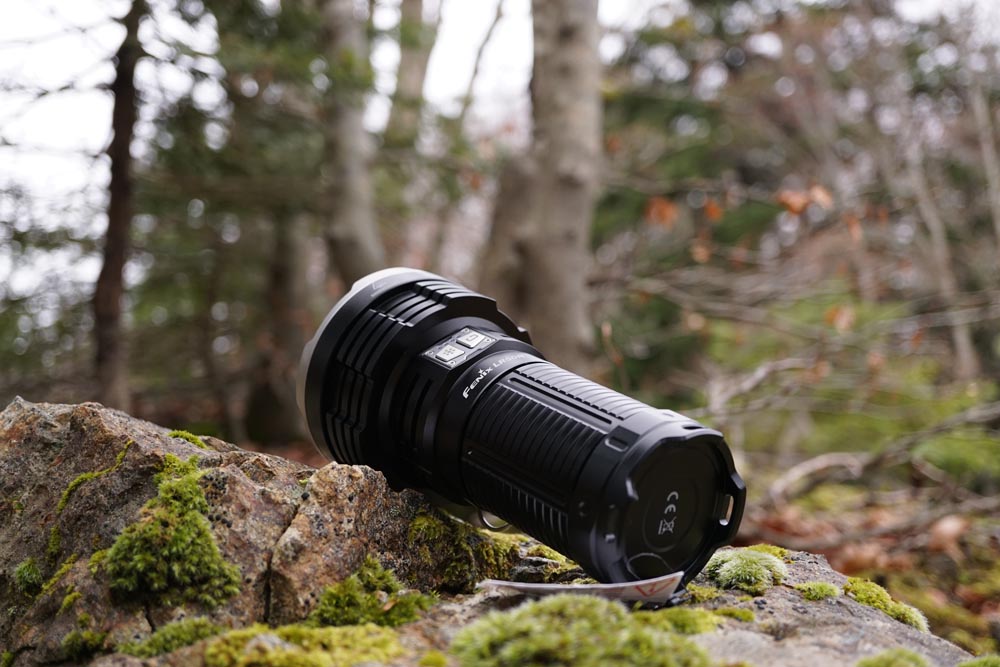
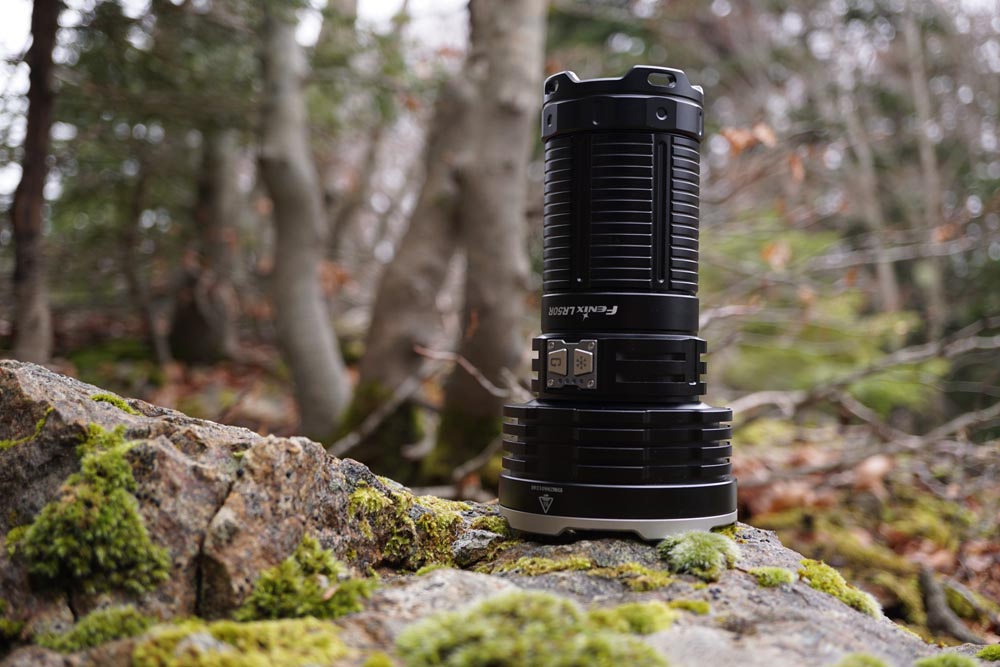
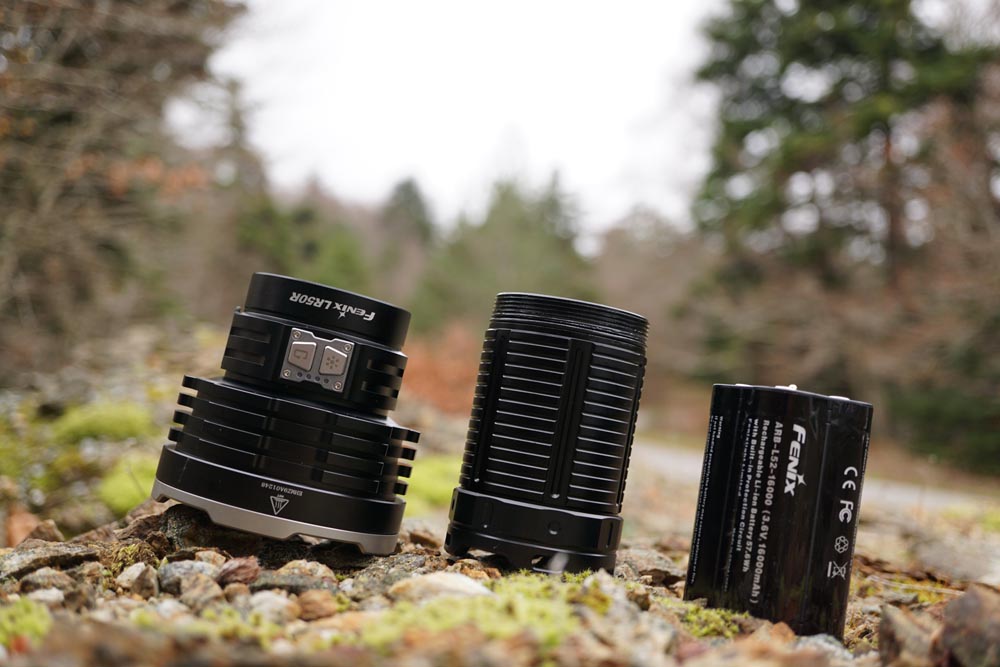
Packaging and content
The Fenix LR50R arrives in a large cardboard box with all the main features of the product imprinted on it. Inside, a thick layer of expanded foam protects the flashlight during transport and prevents its movement.
The flashlight arrives already inserted inside its Nylon holster and overall the equipment includes:
• LR50R Rechargeable Flashlight
• ARB-L52-16000mAh battery Pack
• Lanyard
• Nylon Holster
• Shoulder Strap
• Spare O-ring
• USB Type-C Charging Cable
• LR50R User Manual
• Warranty card

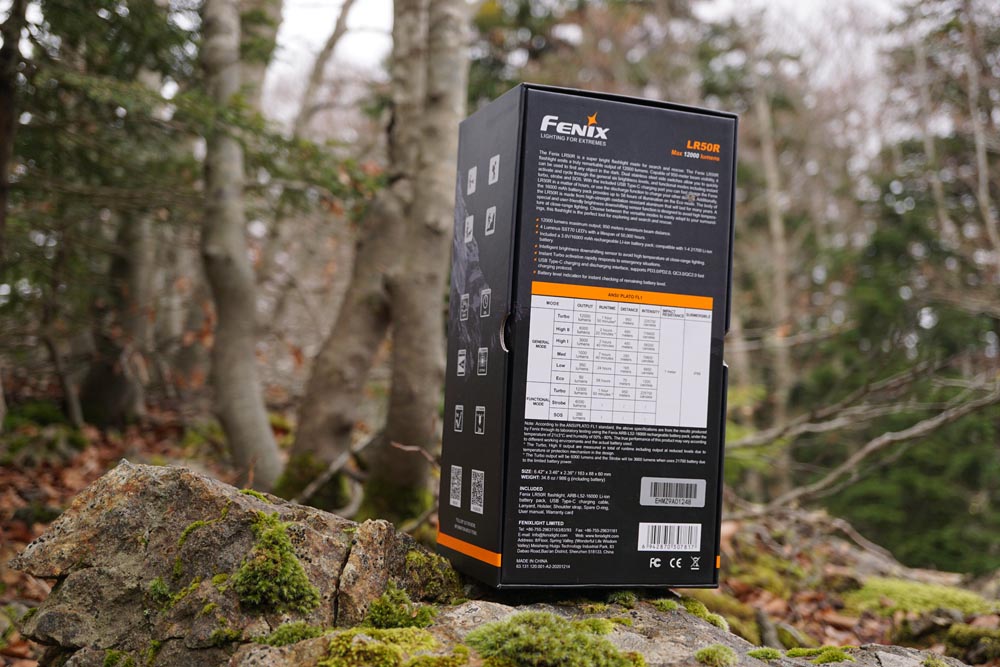
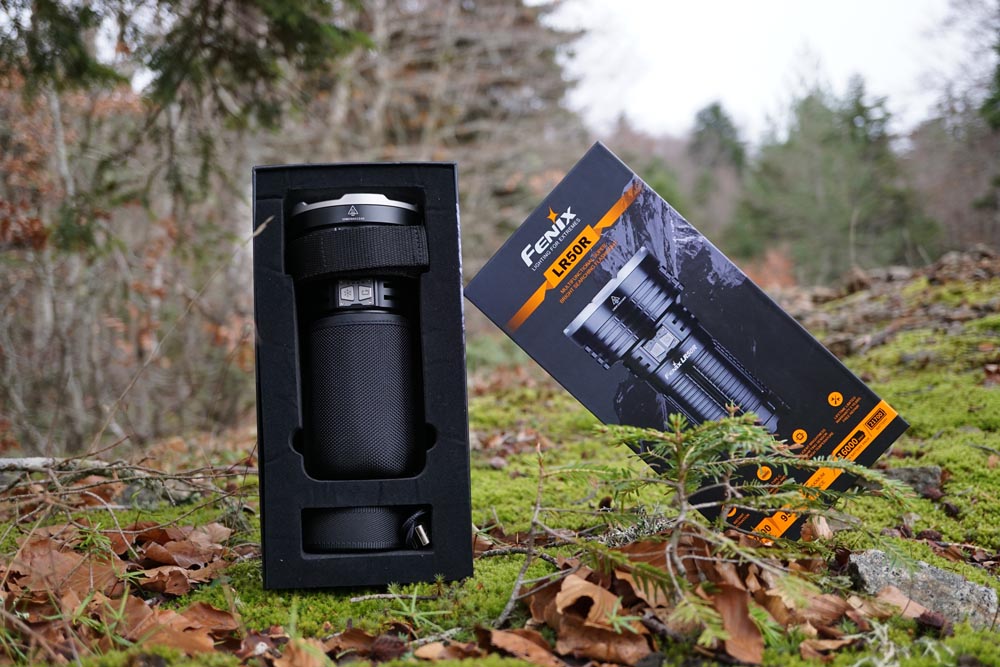
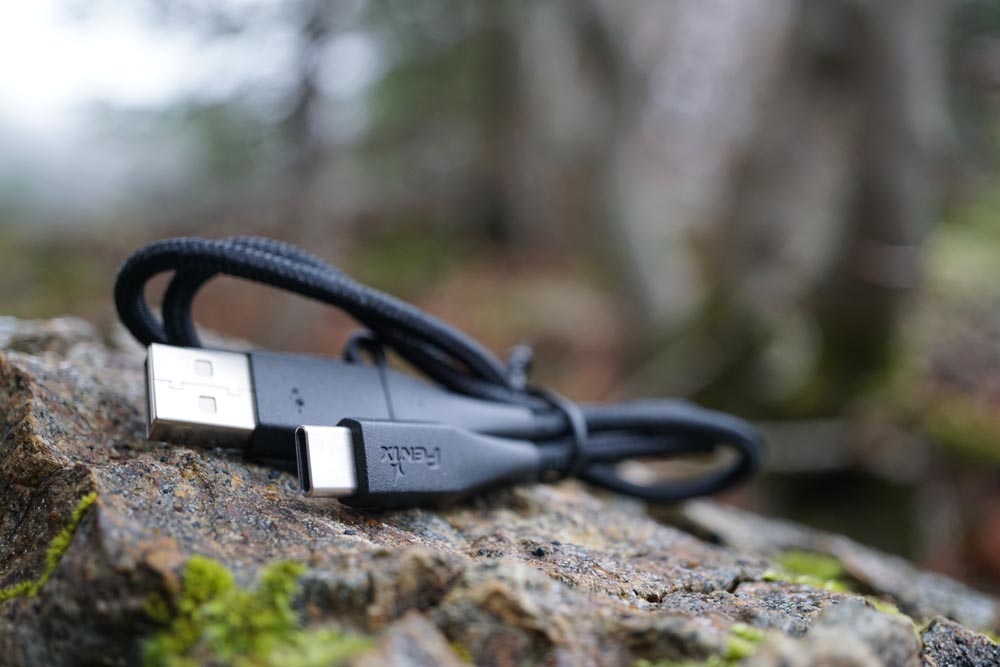
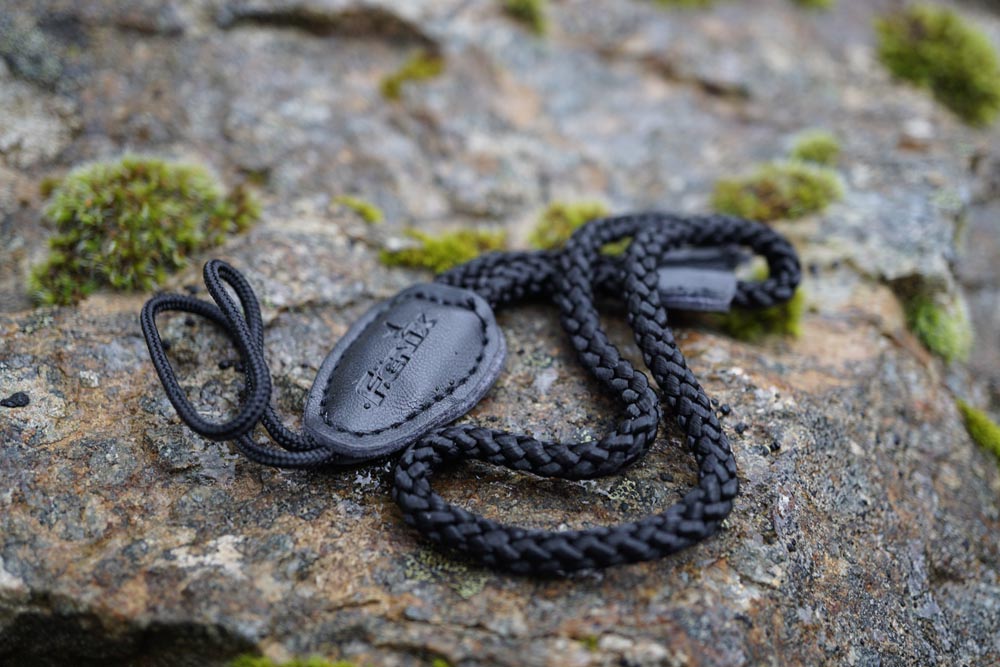

Main features
• Equipped with 4 Luminus SST70 LEDs with a lifespan of 50,000 hours
• Maximum output: 12000 lumens
• Maximum light intensity: 225,750 cd
• Intelligent brightness reduction via proximity sensor: when the flashlight detects an object too close to the lens, the output will automatically switch to the ECO level
• 16000 mAh battery pack consisting of 4x21700 Li-ion
• Rechargeable via USB Type-C
• Fast Charge 4A. Only 4 hours for a full charge
• Powerbank function with fast charging
• Waterproof Type-C charging port
• Electronic Lockout function
• Shoulder strap for transport included in the package
• Tripod socket for hands-free use
• Low voltage warning function
• Digitally adjusted output for constant brightness
• Waterproof to IP68 standard: fully submersible up to 2m depth for 30 minutes
• Batteries included: ARB-L52-16000 rechargeable Li-ion battery
• Compatible batteries: 4x21700 rechargeable (maximum output is 6000 lumens with 21700 batteries)
• Length: 160 mm
• Head diameter: 88 mm
• Body diameter: 60 mm
• Weight: 980g including the battery pack
Output levels and Runtime
On the LR50R we have two modes of operation: general mode accessible via the right switch and functional mode accessible via the left switch.
The outputs are well spaced and divided as follows:
General Mode
• Turbo: 12000 lm (measured 11950lm) – 1h50min
• High II: 6000 lm (measured 6940lm) – 2h20min
• High I: 3000 lm (measured 3280lm) – 2h40min
• Medium: 1000 lm (measured 970lm) – 7h40min
• Low: 350 lm (measured 360lm) – 24h
• Eco: 50 lm (measured 60 lm) – 58h
Functional mode
• Turbo: : 12000 lm (measured 11950lm)
• Strobo: 6000 lm (measured 6940lm)
• SOS: 350lm (measured 360lm)

Schema di Runtime

Turned on to the Turbo the Fenix LR50R pulls out almost 12,000 lumens which decrease steadily in the two minutes following ignition to settle at a high level of about 8000 lumens. Here it remains there for 1 minute keeping the output stable, after which there is a stepdown on a level of about 4000 lumens. The latter is kept that way for over 15 minutes until the torch begins to heat up and reaches the threshold temperature of 55 ° C. At this point the thermal regulation intervenes which decreases the output on a variable level between 1600-1900 lumens. As soon as the temperature drops below the guard threshold, the output is restored to the previous level of 4000 lumens. This up and down goes on for over 2 hours after which the LR50R undergoes a series of stepdowns until total shutdown after about 4 hours.

The High II level behaves very similarly to the Turbo. It starts from around 6800 to pass after 2 minutes on a level of 4500 and after another 28 minutes on the level of 4000 lumens. Reached 55 ° C, the thermal regulation intervenes which decreases the brightness, allows the torch to cool down and return to the 4000 lumen level just as seen on the Turbo.

The High I level, on the other hand, starts at around 3300 lumens and steadily grows up to around 4000 lumens in 35 minutes. Then, also in this case, the thermal regulation intervenes. Total shutdown occurs approximately 4 and a half hours after ignition.
The 1000 lumen Medium level, on the other hand, will "never", given the tonnage of the LR50R, bring the flashlight over 55 degrees, so the thermal regulation will not intervene. The output therefore, after an initial increase, remains constant for about 7 hours and then undergoes a sharp stepdown on the Low level. Total shutdown occurs approximately 9 hours after ignition

The body and the materials
The Fenix LR50R is defined as a "searchlight" or an ideal torch for search operations. Usually the so-called "searchlights" are large flashlights, particularly powerful and with beams capable of reaching long distances: the Fenix LR50R in fact has all these characteristics.

It weighs almost 1kg, but the feeling you get when holding it in your hands is that of handling a product of the highest quality and sturdiness. The dimensions are important but not excessive: the battery holder tube has a diameter of about 6cm, almost like that of a can of coke, while the head is a little wider and reaches almost 9cm.
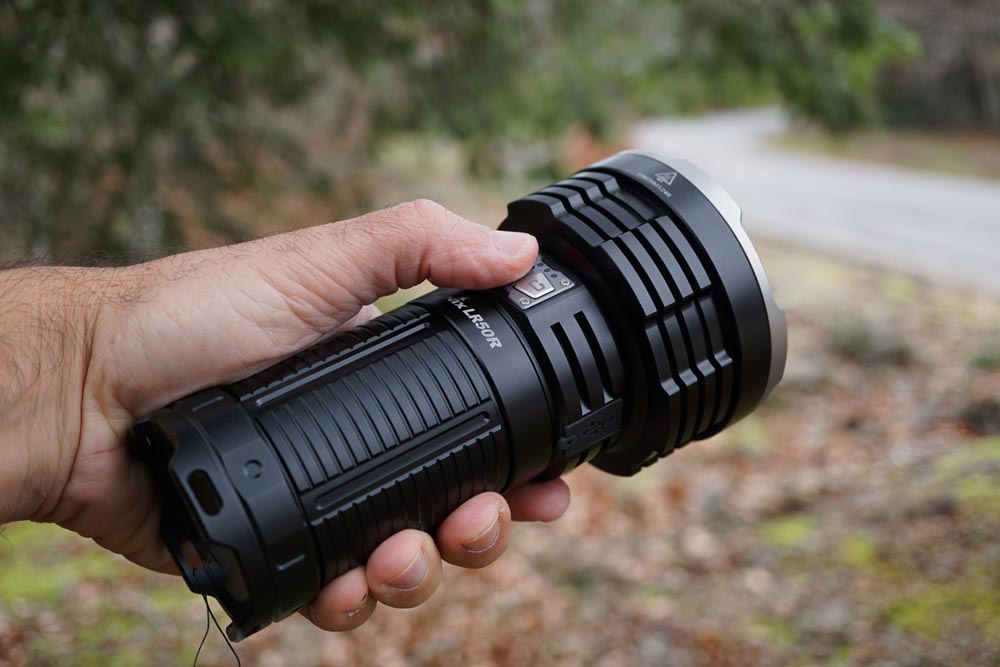
Given the weight and size, Fenix has seen fit to provide a carrying strap with metal snap hooks bundled with the flashlight. Installation is simple thanks to the large holes on the tailcap and the ring that can be screwed sideways on the body of the flashlight.
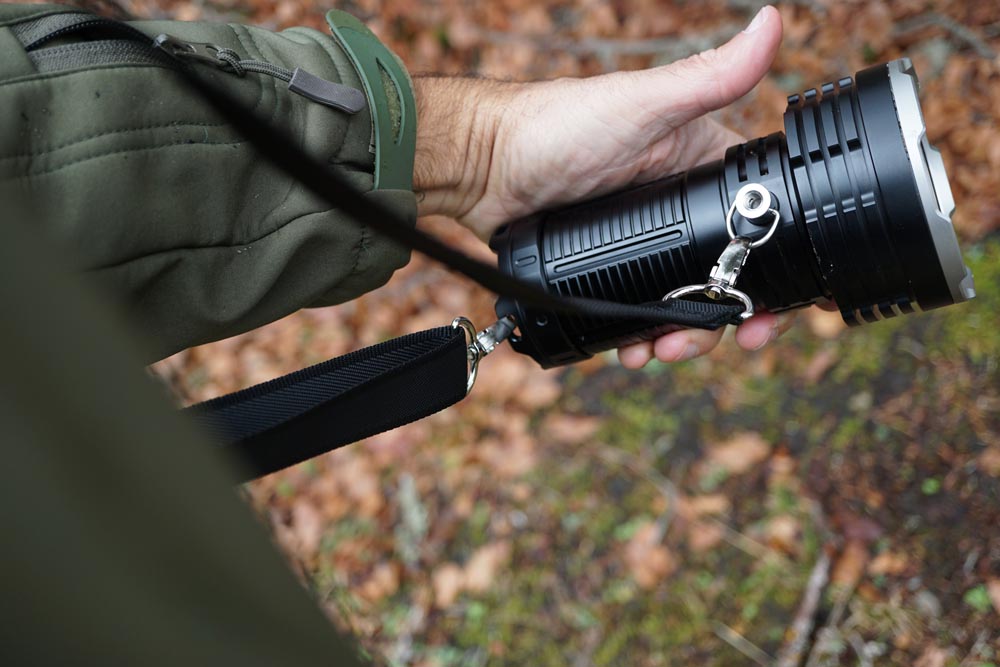

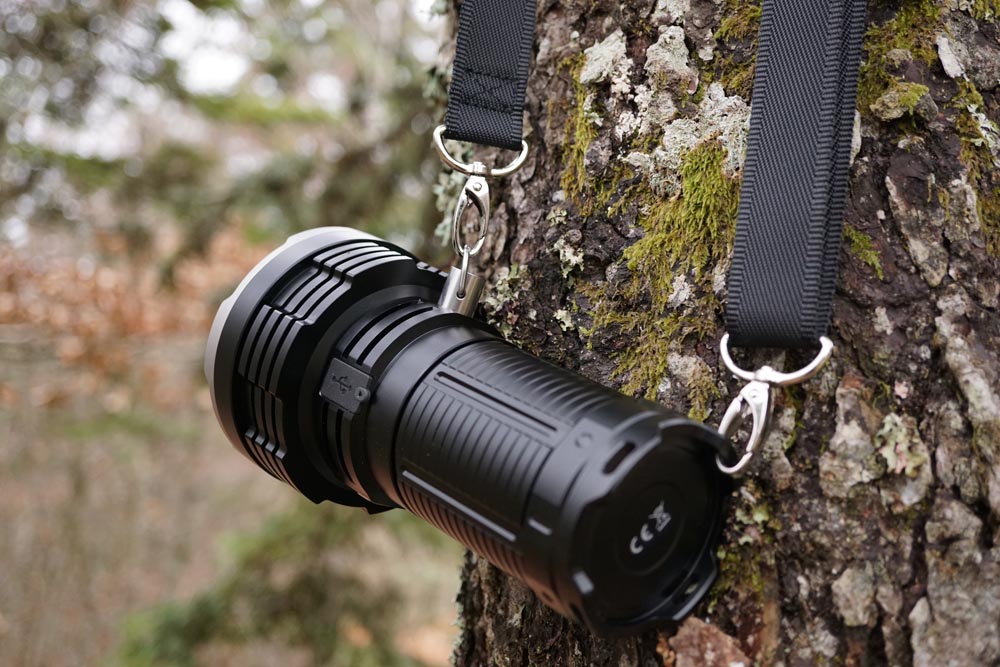


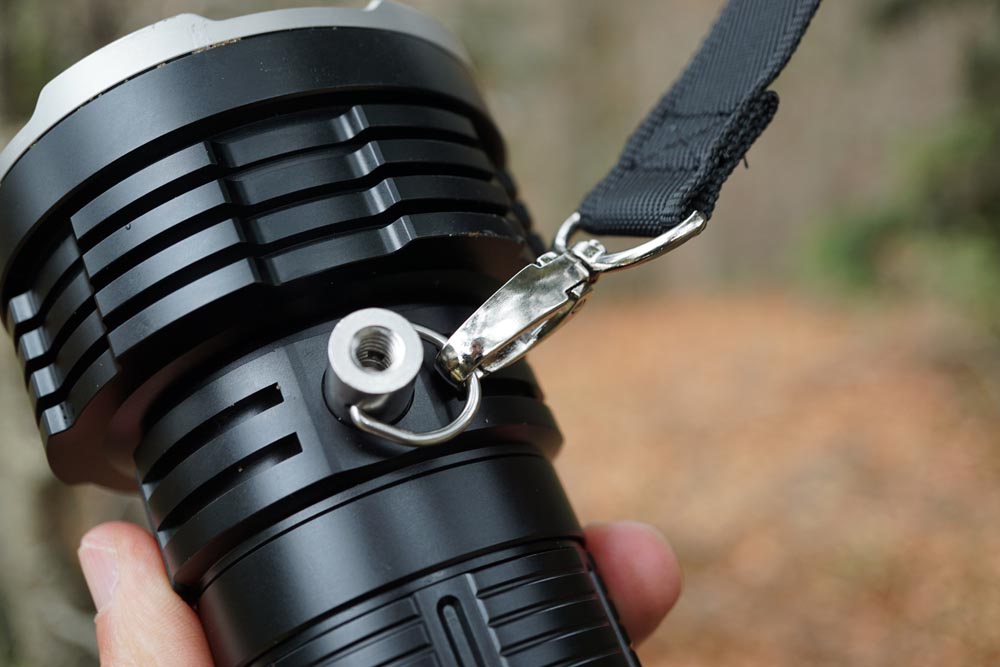
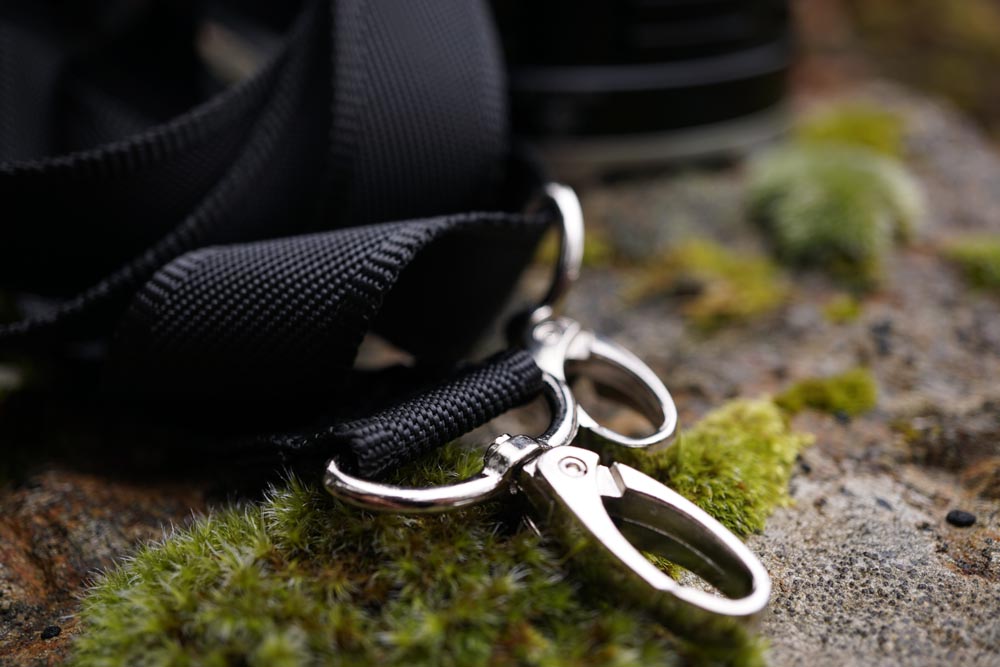
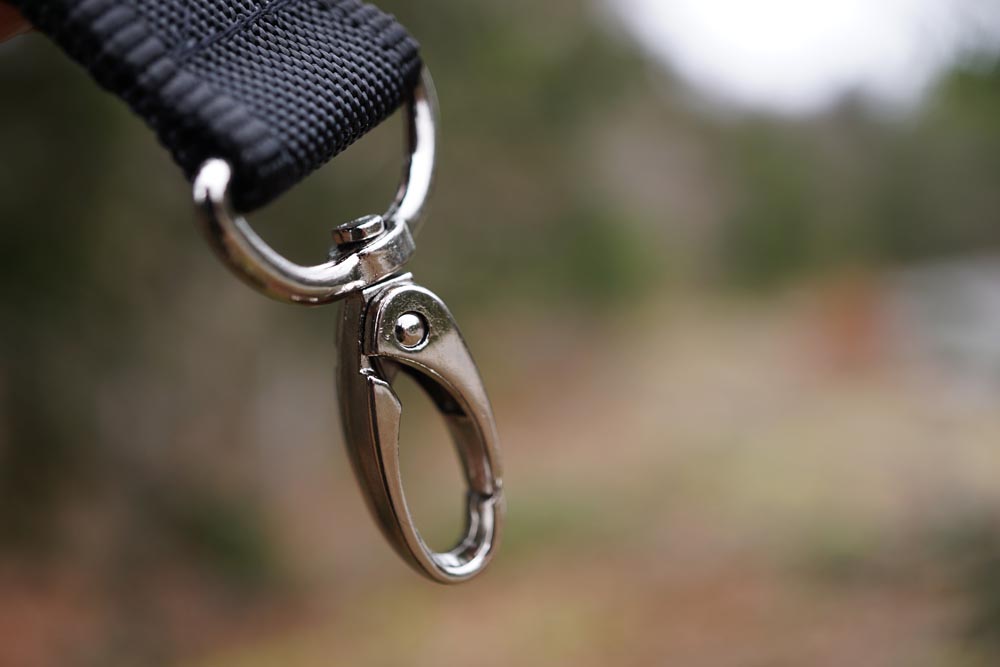
The package also includes a wrist lanyard in my opinion not very useful and perhaps a little inconvenient to use on a flashlight of this size.
The LR50R comes together with a practical rigid Nylon holster where the torch is placed with the head facing upwards.
The light is blocked by means of a tear-off band that wraps around the head. On the back there is a large belt loop, a second loop with velcro closure and a large plastic D-ring.
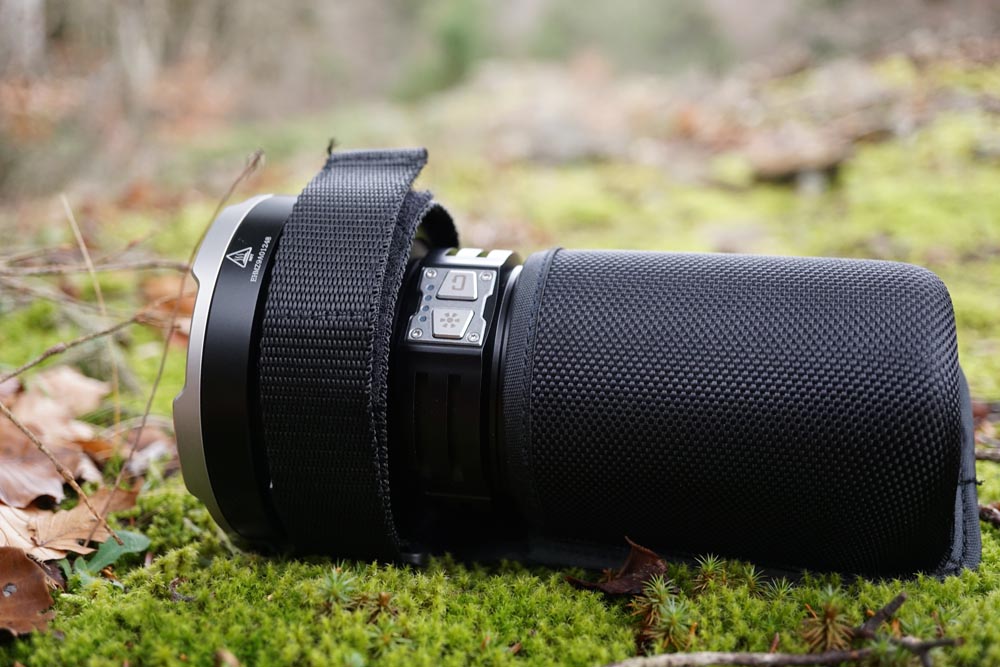
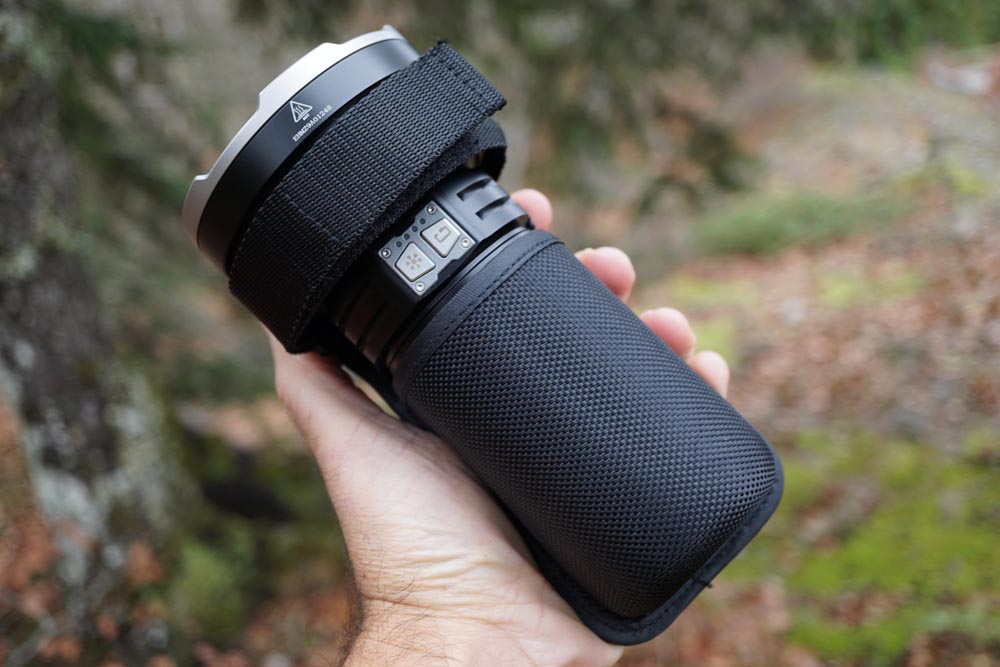

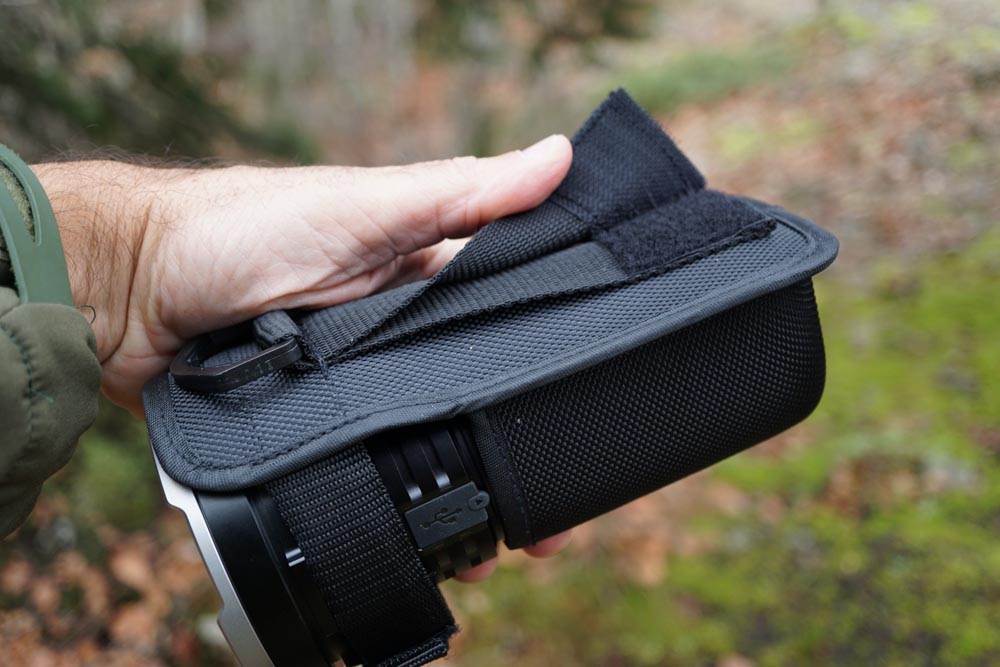
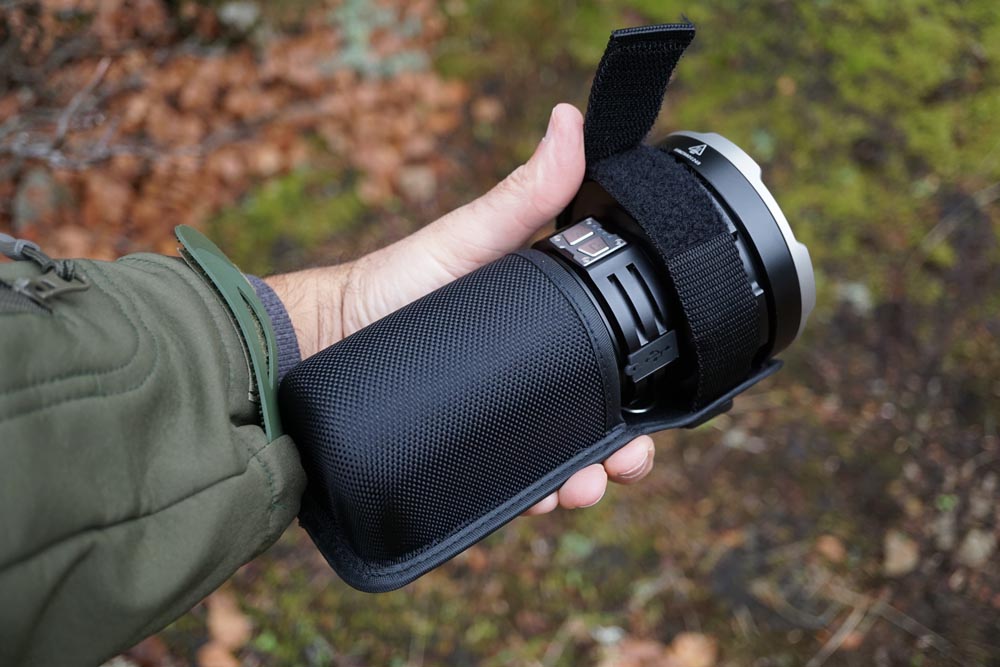
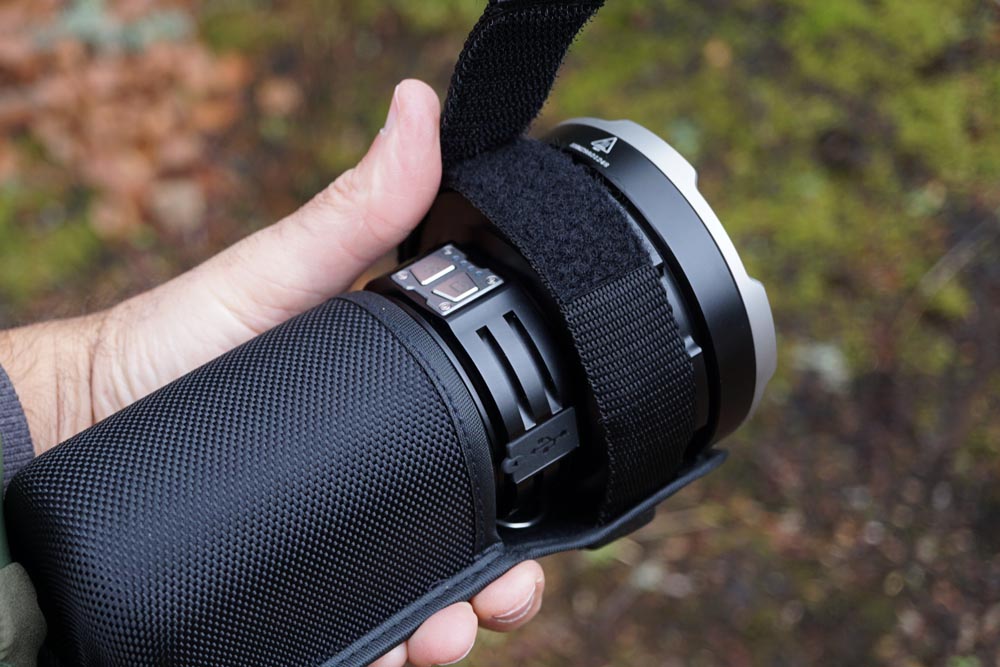
The user interface is managed by the two electronic switches placed laterally near the head: the first, the one on the left, is defined as "auxiliary" and useful for managing the functional mode, while the one on the right is used to use the flashlight in general.
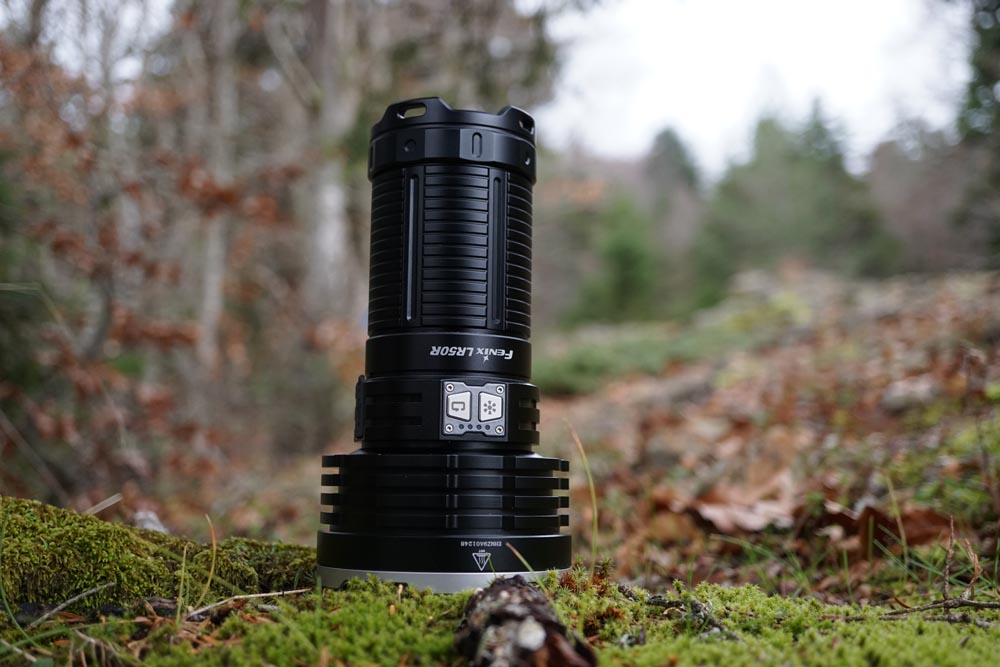
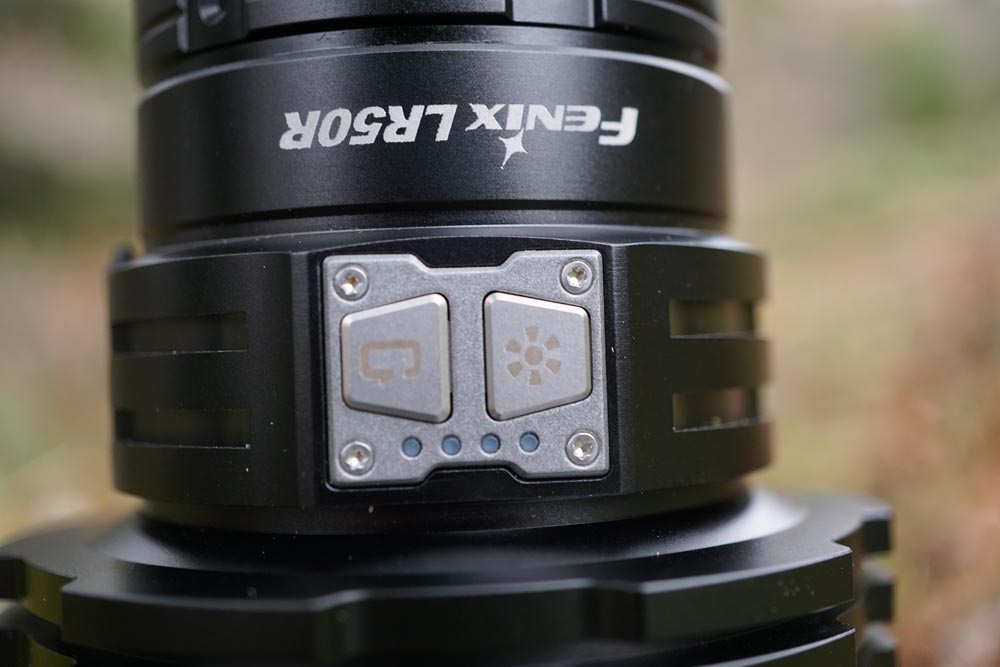

Just above the two switches we find 4 small blue status LEDs that provide information on the residual capacity of the batteries and on the charging progress.

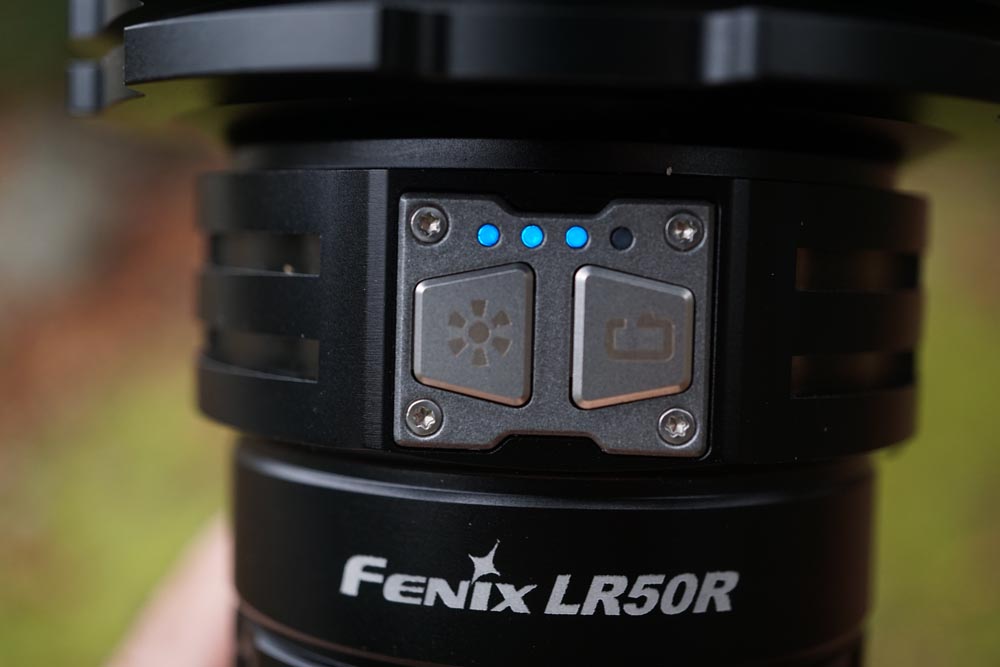
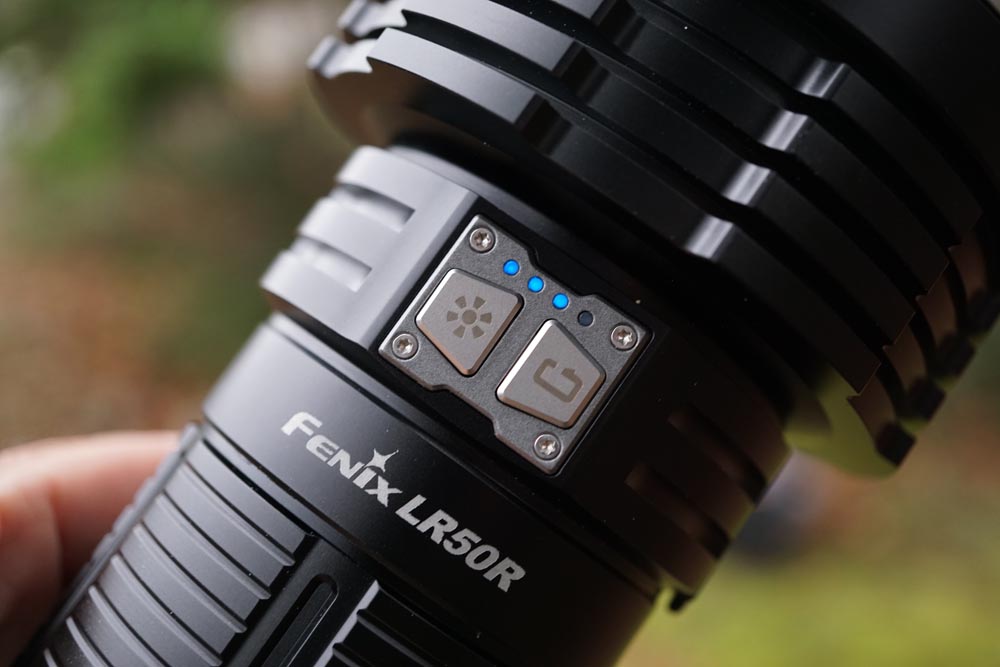
The head is large and equipped with a series of deep and thick dissipation fins. The body has no knurling but horizontal and vertical millings which always guarantee excellent grip. Well done HA III type anodizing, slightly opaque and smooth to the touch.

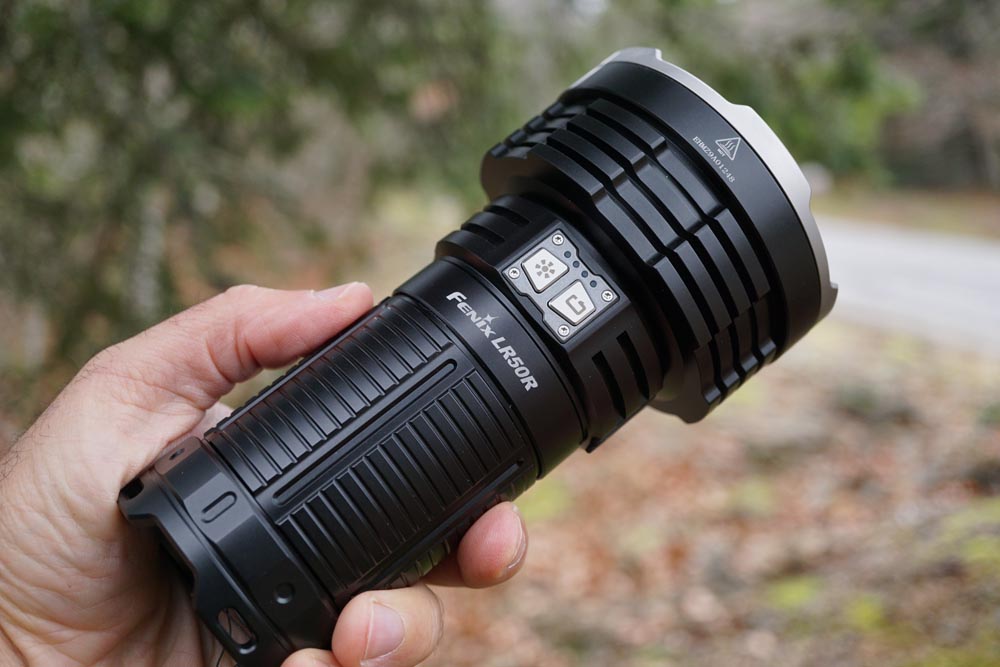
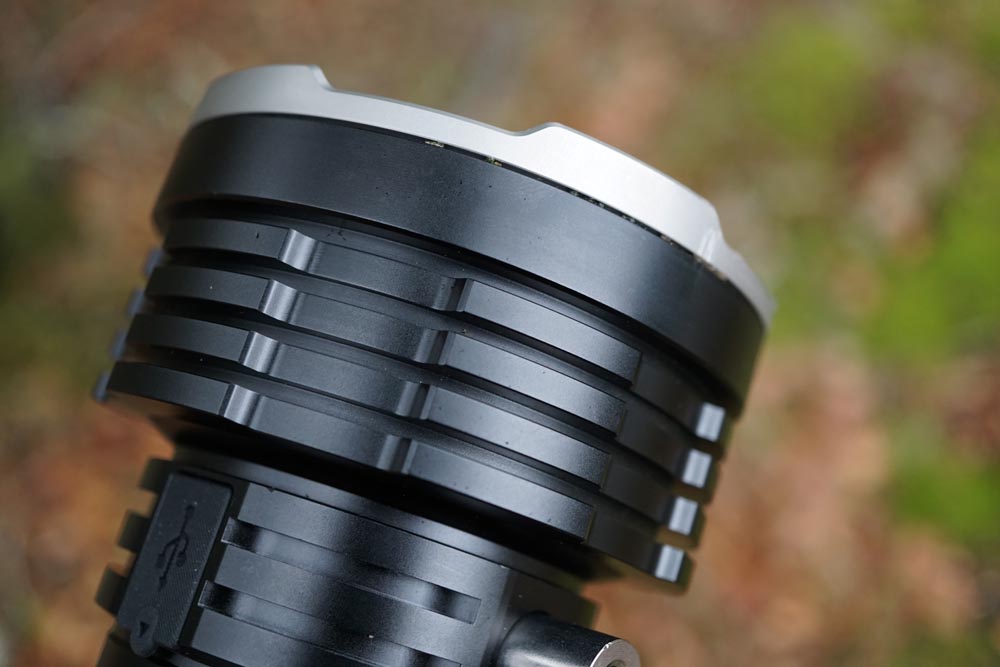
The threads are anodized, smooth and arrive well lubricated. Physical lockout of the interface is allowed by slightly unscrewing the battery tube.
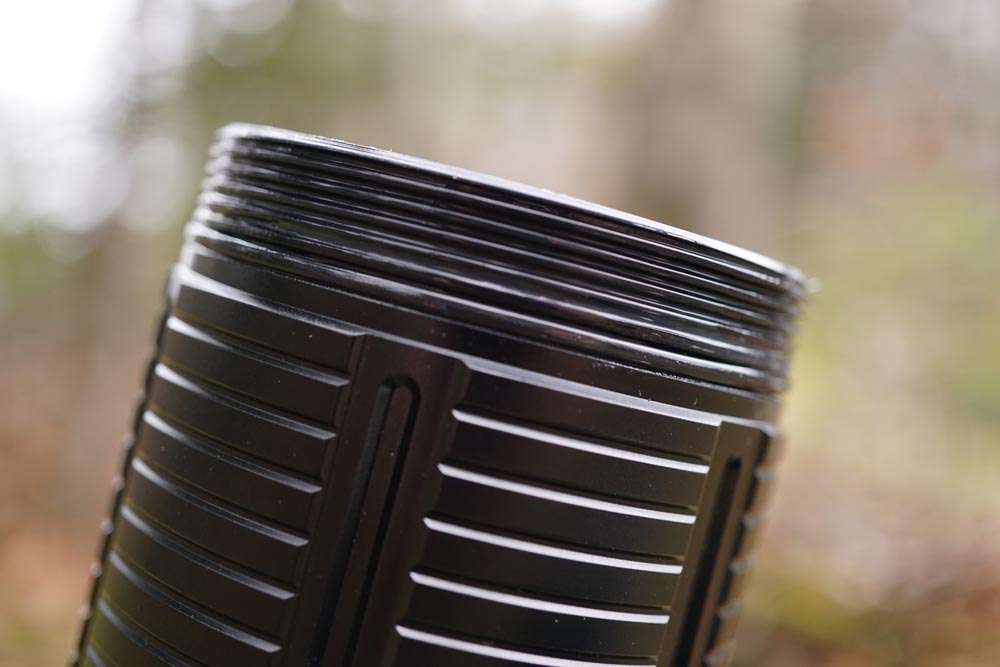
The head side contacts are composed of two concentric metal rings for power supply and a central contact that allows the LR50R to understand if the original battery pack is installed or if you are simply using 21700 cells. On the tail side instead (negative pole) there are 4 thick golden springs.
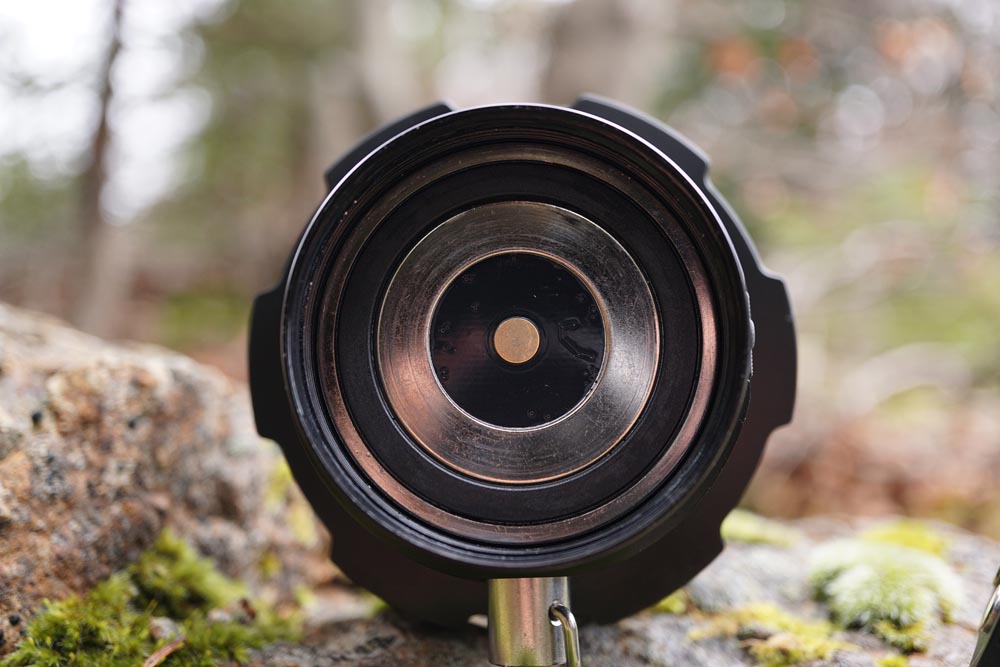
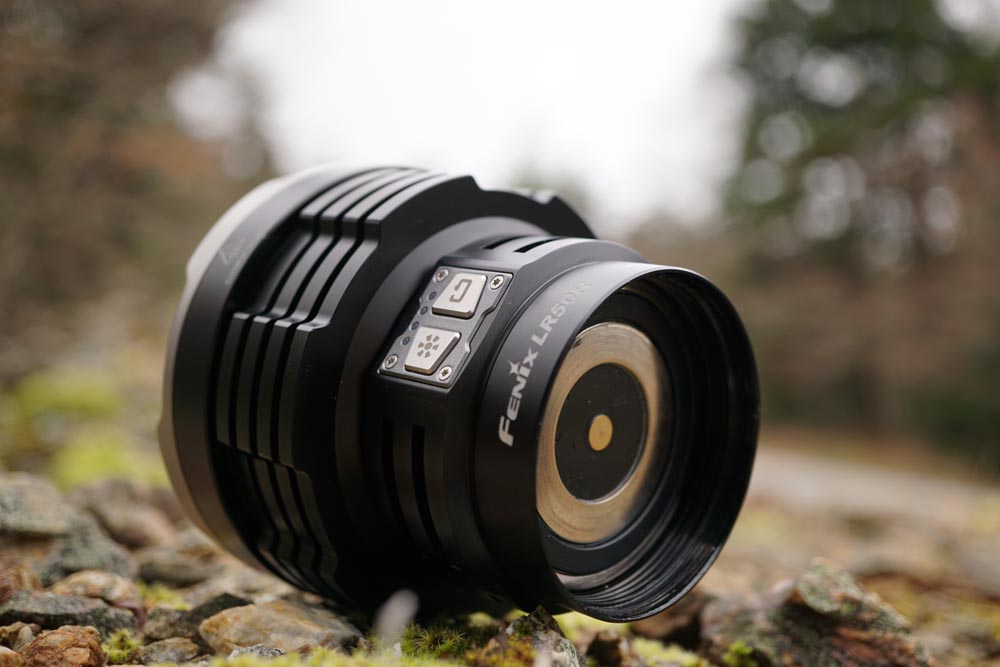
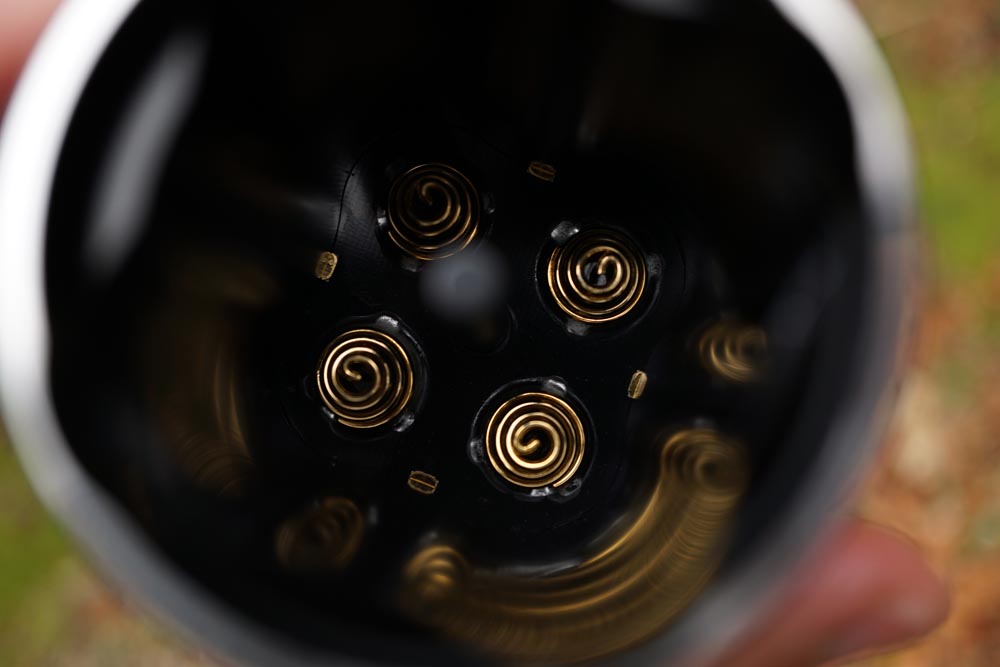
The optical part is made up of 4x 6000K SST70 LEDs well centered with white centers inside a smooth and mirror polished multiparabola. The lens is made of glass, thick and with anti-reflective treatment. The bezel is in brushed steel and is rather protruding. Fenix claims that the beam produced by the LR50R has a spot of only 8 degrees and a spill of 75.
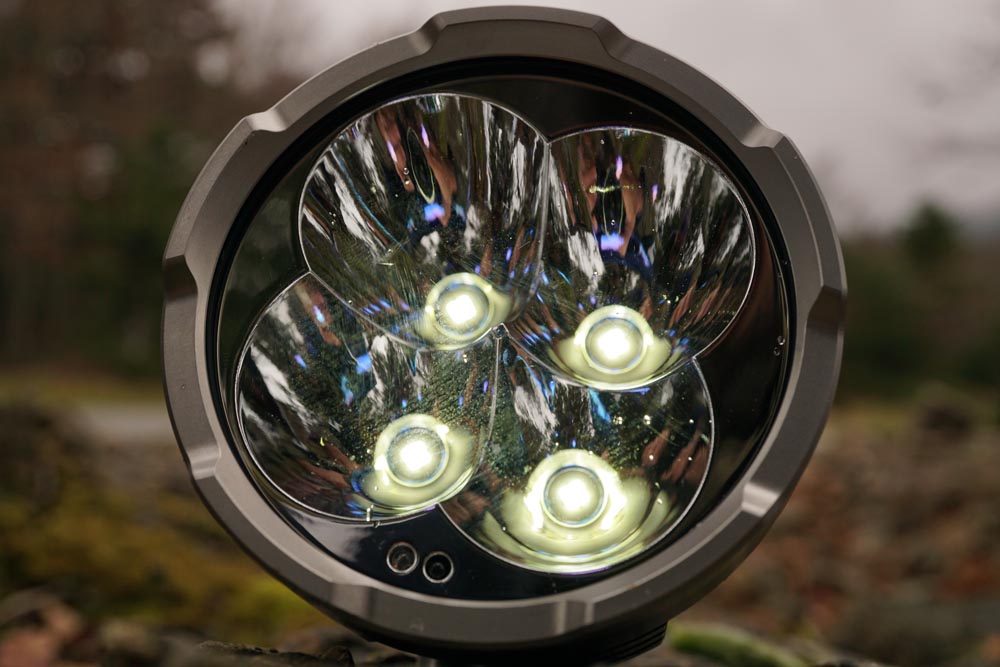
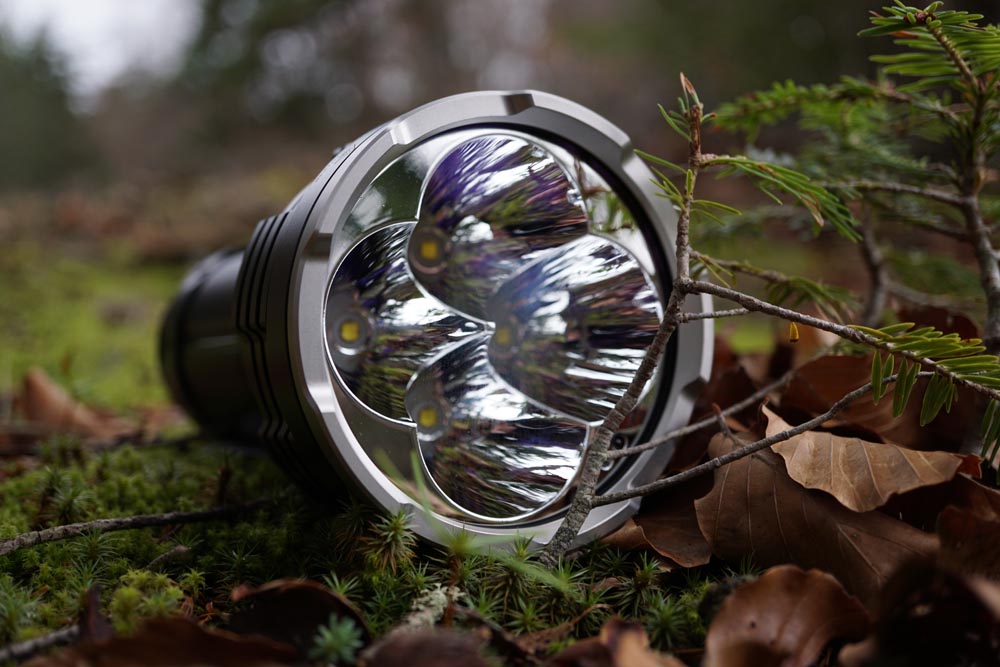

On the dish it is possible to notice the presence of some sensors: these have the task of detecting the presence of obstacles in front of the lens up to a distance of 60mm. Once an obstacle is detected for more than 1.5 seconds in front of the lens, the LR50R will automatically switch the output to ECO level to avoid possible damage caused by high temperatures. By moving the flashlight away from the obstacle, the output will return to the previously selected level.
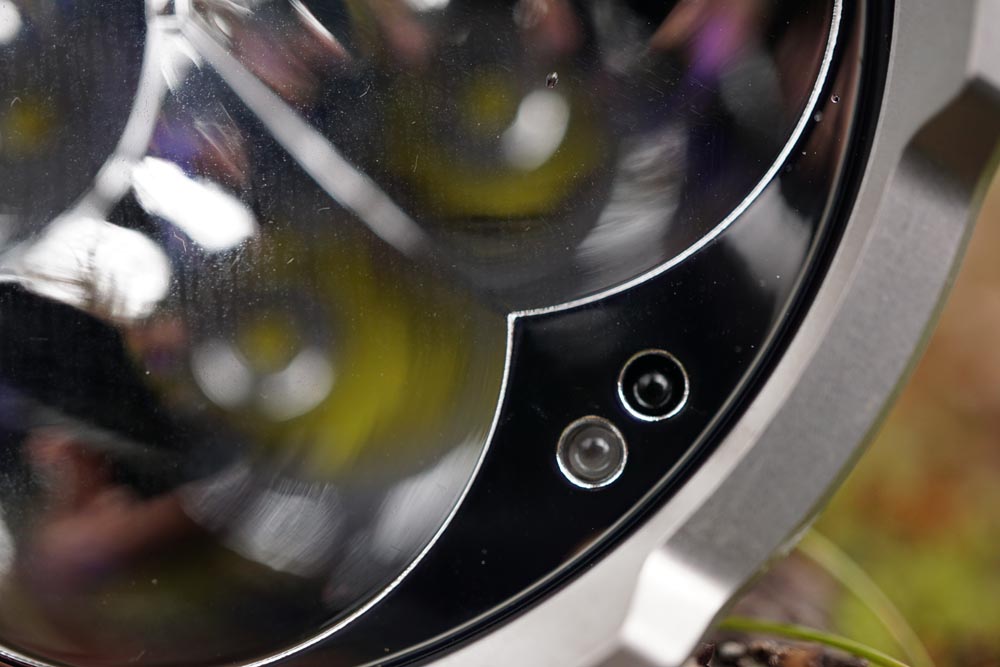
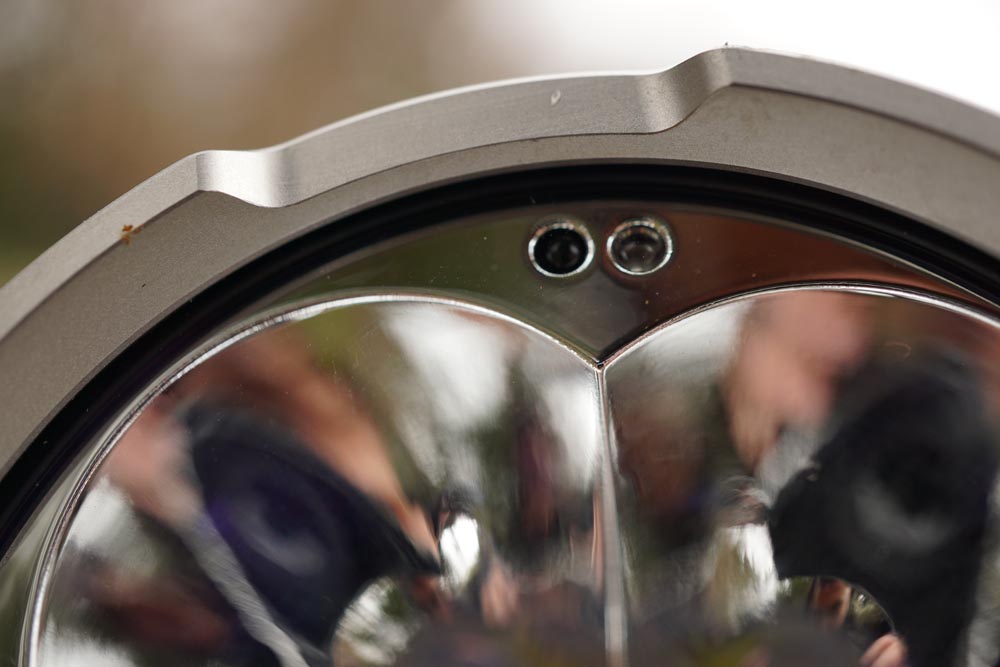
The power supply is guaranteed by a 16000mAh battery pack consisting of 4 21700 4000mAh batteries placed in parallel (4P), and equipped with a protection circuit. A small pin on the battery pack, as mentioned above, provides the flashlight with the information that the original battery pack has actually been installed.
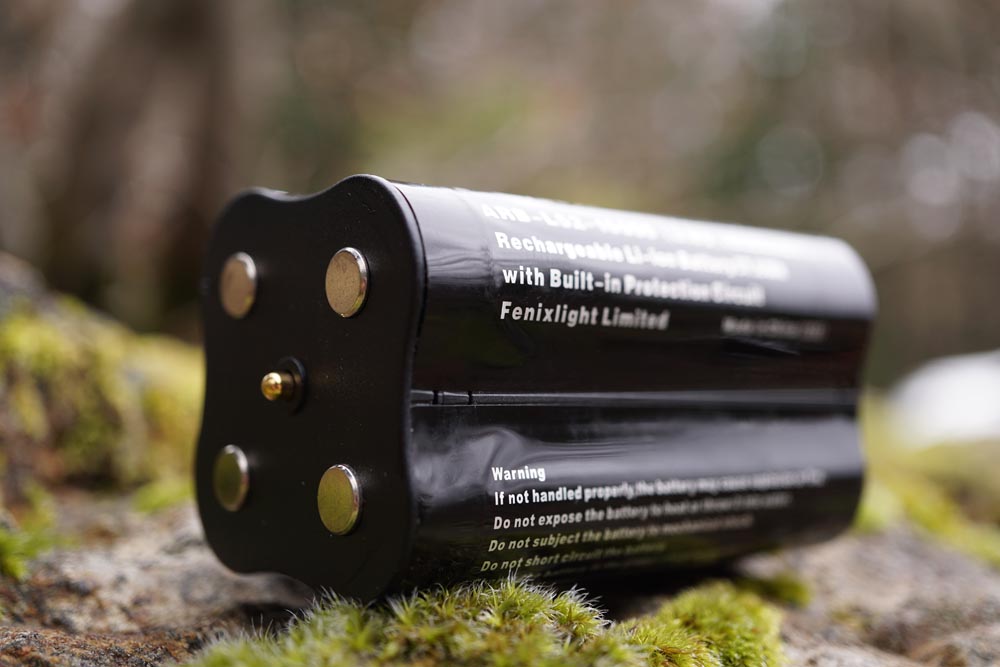

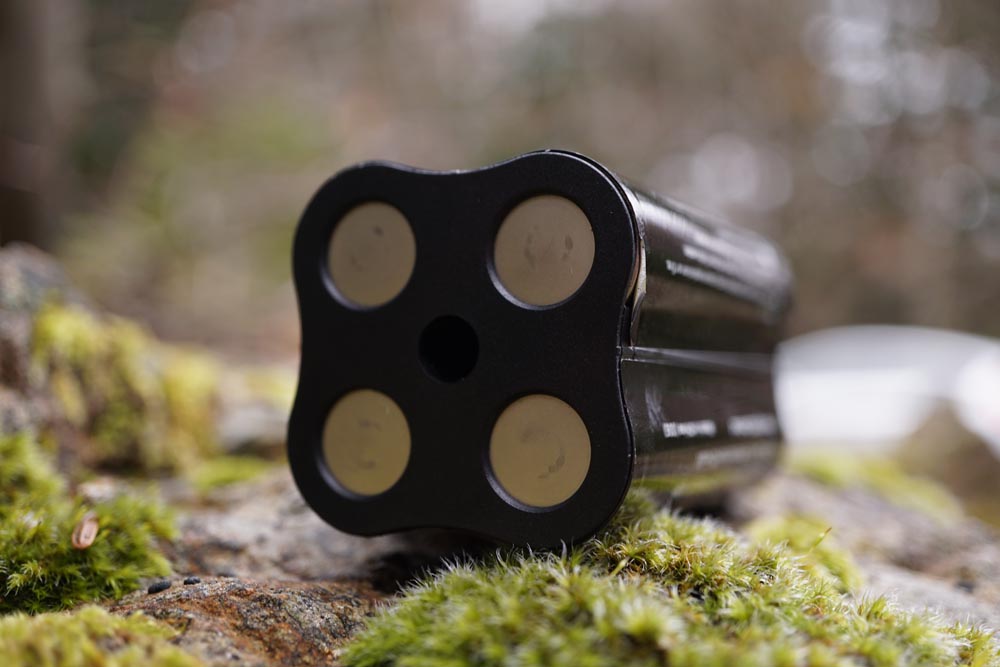
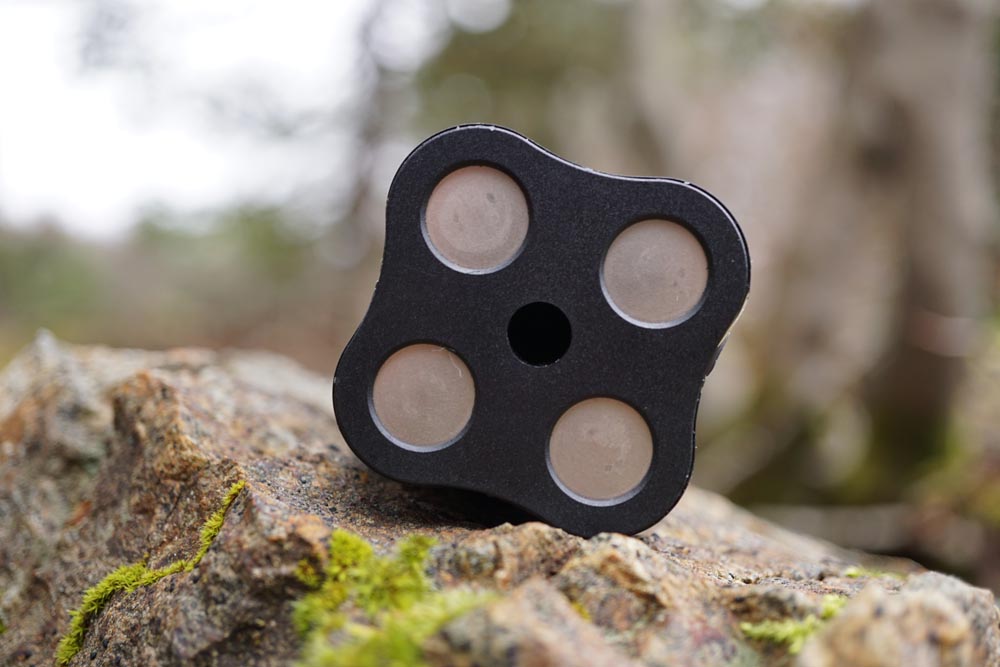



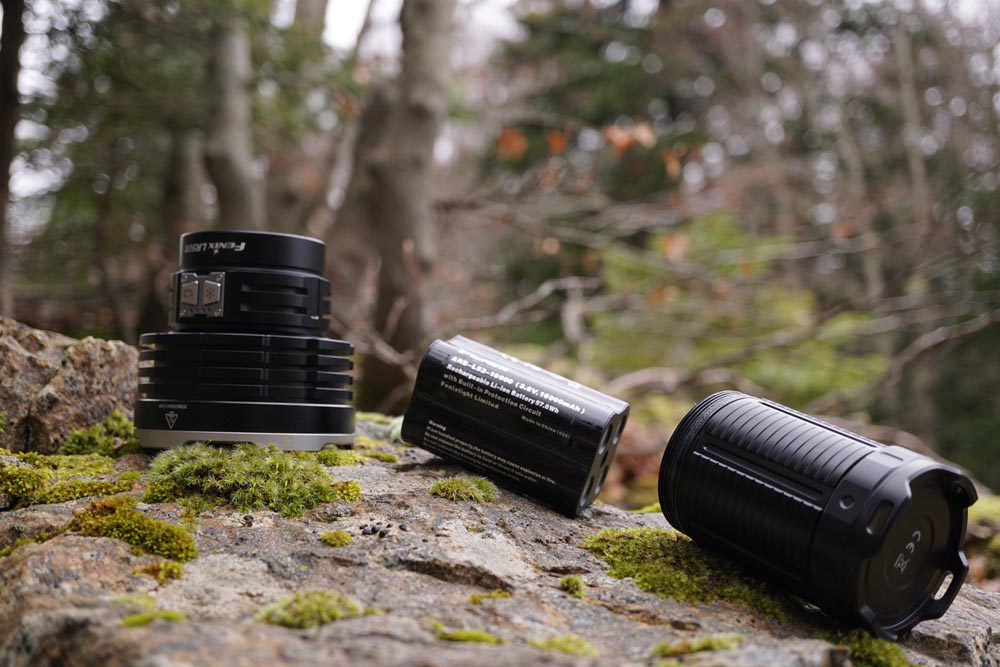
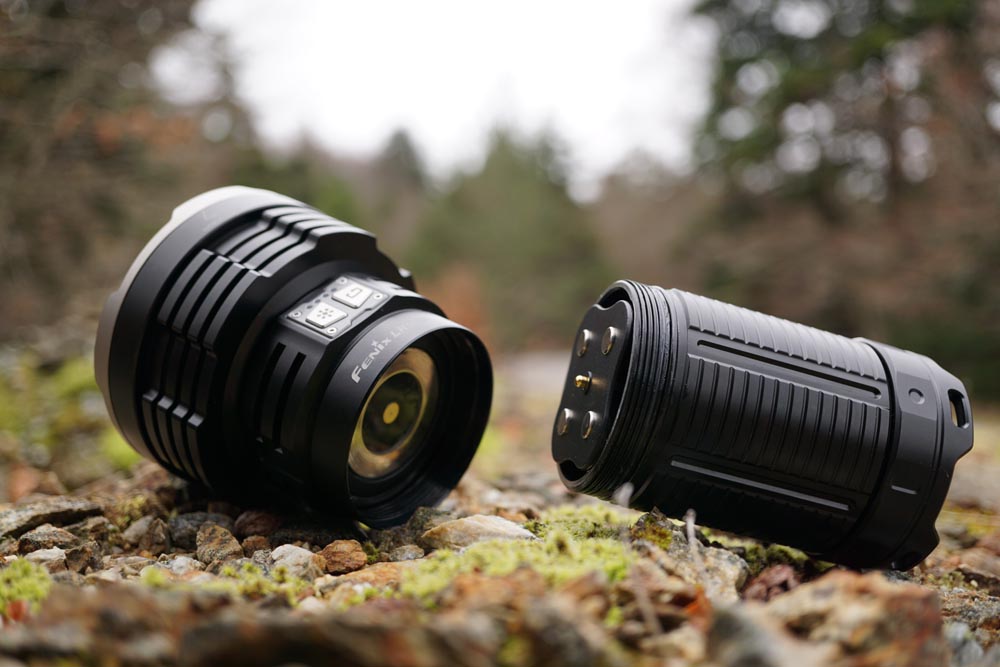
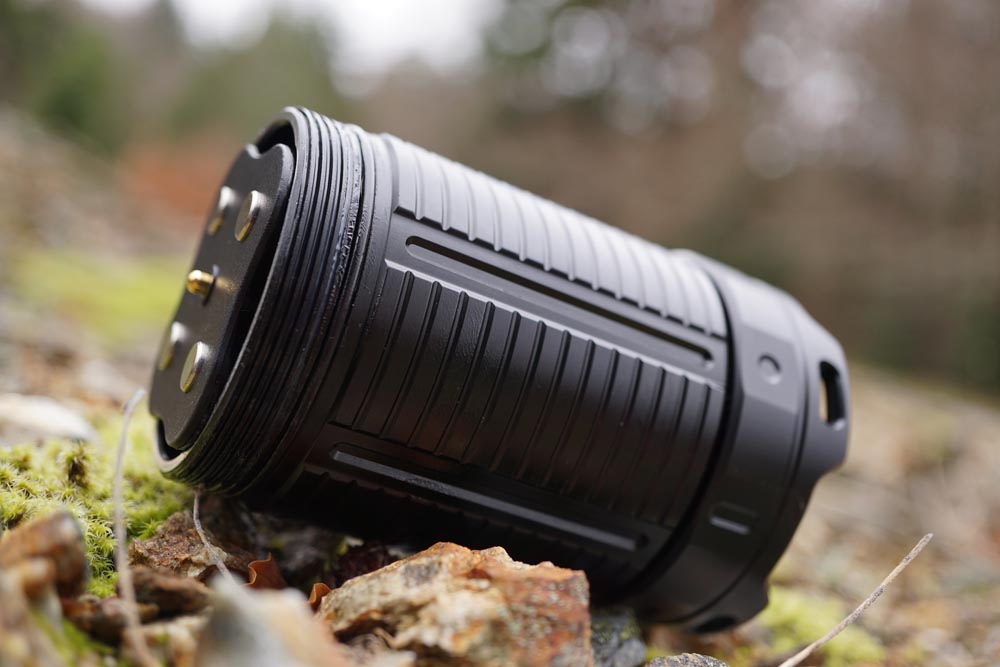
The Fenix LR50R can also be powered with classic 21700 cells, but beware !!! Because in this case it will not be possible to use the Turbo level of 12000 and the maximum usable output will be the High II of 6000 lumens. In this way Fenix “forces” LR50R owners to use original battery packs if they want to have the maximum output of 12000 lumens. Otherwise, using the classic 21700 cells the maximum output available will be only 6000 lumens!
Obviously I find it useful that the LR50R can be used both with a proprietary battery pack and with the classic 21700 cells but the difference in maximum output between the two options leaves me a little perplexed. Why such a choice? Security Matters? Or is it a choice dictated only by commercial purposes? I asked Fenix for clarification directly and he replied telling me that the battery pack supplied with the LR50R is more efficient in terms of discharge current than the original Fenix 21700 batteries. Ok XD!
The parallel power supply system allows the torch to be powered with 4 but also with only 1, 2 or 3 cells. The flashlight will still work but the runtimes will decrease proportionally. The 6000 lumen “Turbo” (High II) can be recalled in any case.
A very useful function that the Fenix LR50R has is that of a powerbank. In fact, it is equipped with a bi-directional Type-C port that acts as a charging port for the internal batteries and a fast charge charger for any type of electronic device. To charge the flashlight and to use it as a powerbank, Fenix has included a USB - TypeC cable that turns into a Type-C - Type-C if necessary.
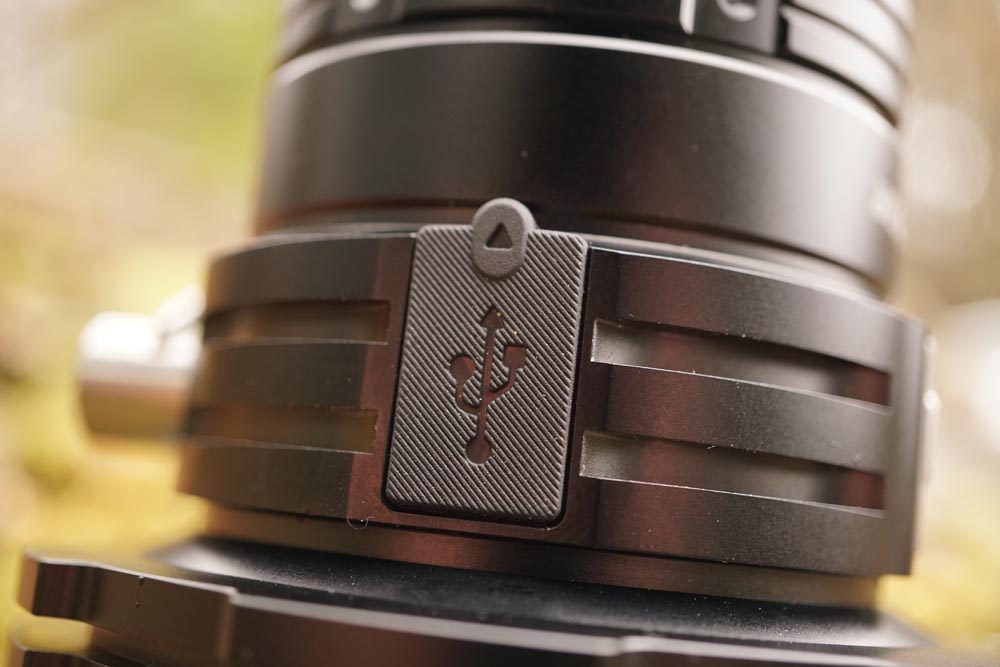

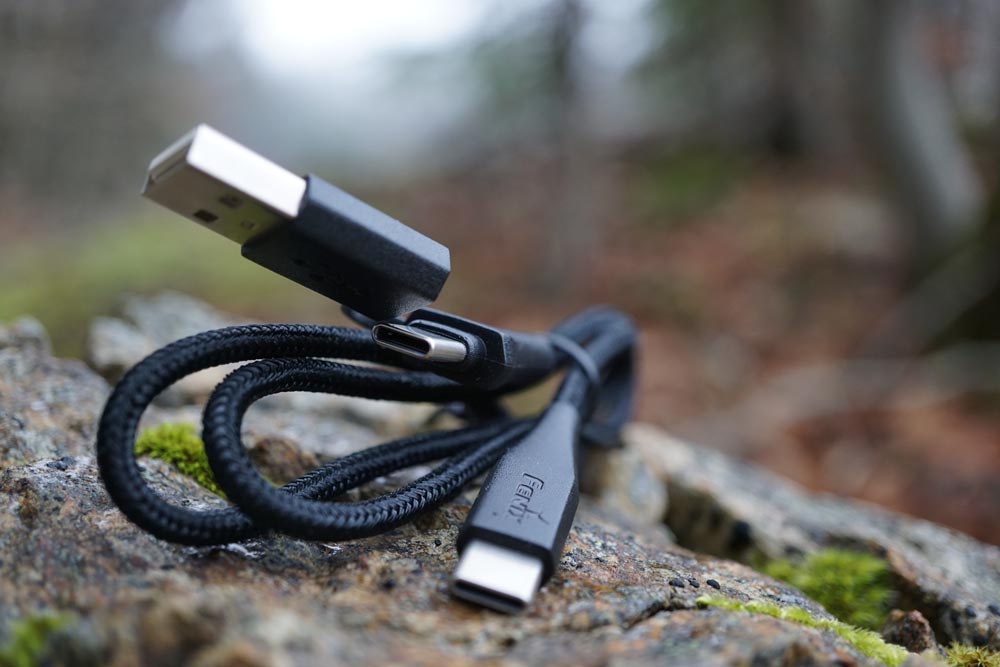
The status LEDs located above the switches light up in sequence during the charging phase, while during the use of the flashlight they indicate the amount of remaining charge as follows:
• 4 LEDs on: charged between 100% and 80%
• 3 LEDs on: charge between 80% and 60%
• 2 LEDs on: charge between 60% and 40%
• 1 LED on: charge between 40% and 20%
• 1 flashing LED: charge between 20% and 1%
On the side, the flashlight has a 3/8 screw connection for tripods. A metal adapter is supplied which also acts as a ring for connecting the carrying strap and which brings the connection from 3/8 to 1/4.


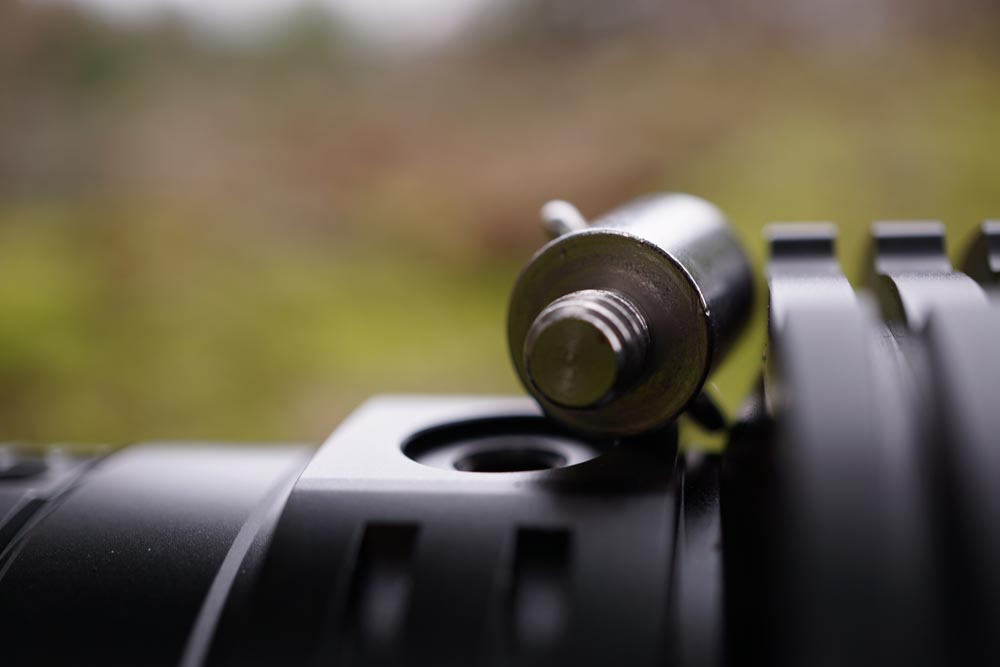
The tailcap is not flat but still allows tailstanding. There are also two large holes for inserting the laynard.

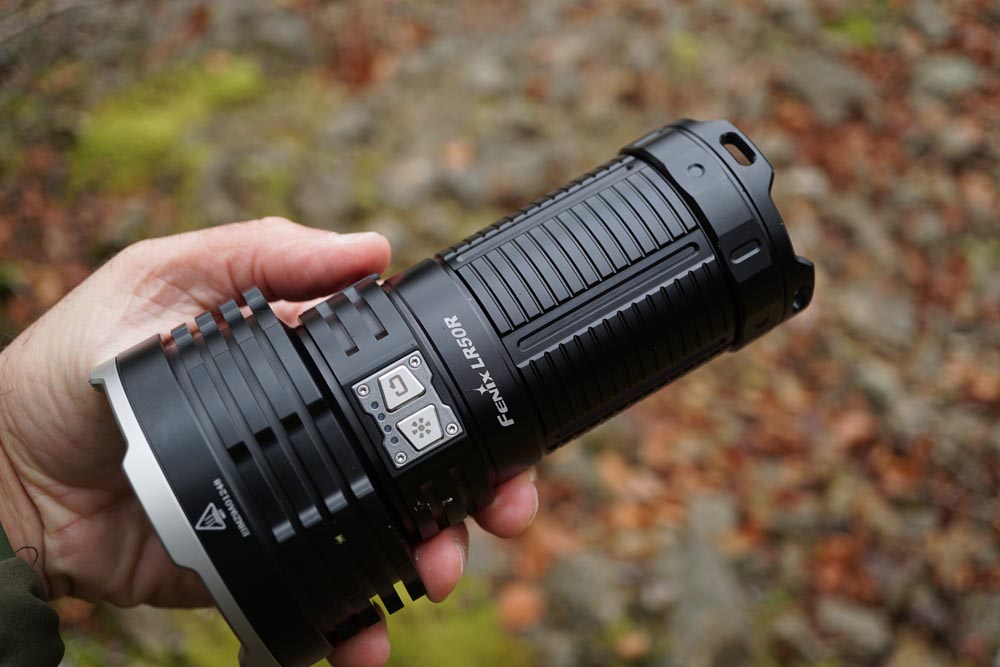

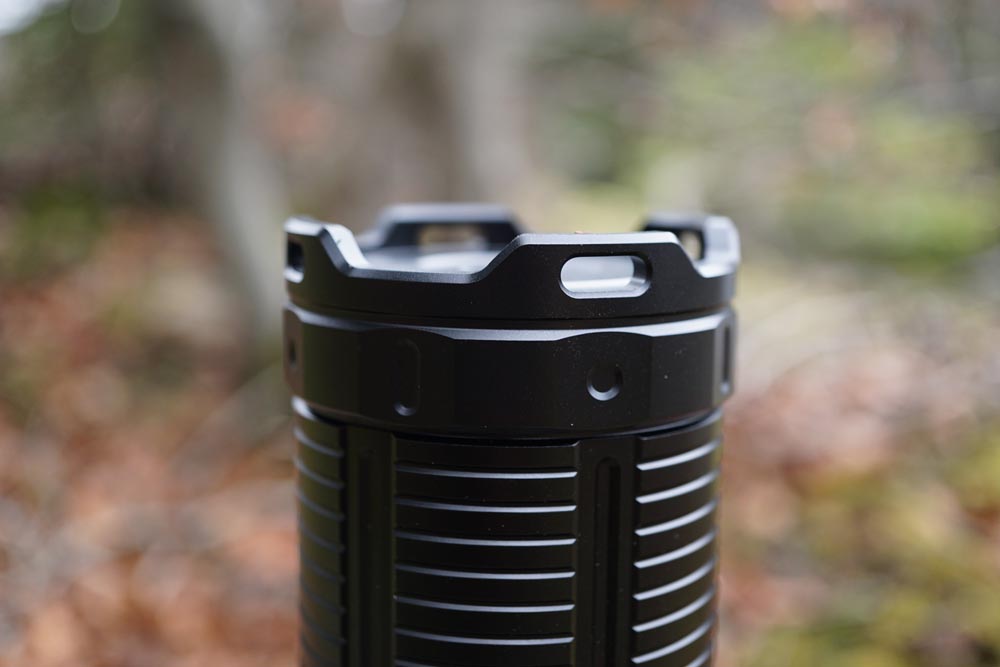
User interface
On/Off
• Press and hold the right main switch for 0.5 sec to access the last used mode (general mode)
• Press and hold the left auxiliary switch for 0.5 sec to enter Turbo (functional mode)
• Press and hold either switch to turn off the flashlight
Output selection
• From the flashlight on, click on the main right switch to scroll through the levels: Eco -> Low -> Med -> High I -> High II -> Turbo
• From the flashlight on, click on the left auxiliary switch to access the Turbo and to scroll through the levels: Turbo -> Strobe -> SOS
Strobo
Press and hold the left auxiliary switch for 0.5 sec to enter Turbo (functional mode)
Turbo access
• Press and hold the left auxiliary switch for 0.5 sec to enter Turbo (functional mode)
• Scroll through the levels of the general mode using the main right button until you get to the Turbo
Memory Mode
• The LR50R memorizes the last level used by the user to propose it again at the next power on.
• Level storage mode is not active when using 21700 cells.
• The functional modes Turbo, Strobe, SOS are not memorized, so clicking on the left switch will always access the Turbo directly.
Avviso di bassa tensione
When the battery is about to run out, the flashlight will decrease the output to the ECO level and then turn off.
Lockout mode
• With the flashlight off, keep both buttons pressed to electronically lock the flashlight. Repeat the operation to unlock it.
• If you press the switches while the torch is locked, two flashes will be emitted to inform the user that you are in lockout mode.
Charge level indication
• With the flashlight off, click on one of the two switches to find out, via the status LEDs, the amount of residual charge in the cells.
Beam, Tint and Beamshots
The beam of the Fenix LR50R is purely for shooting with a narrow and very bright spot and a wide and very bright spill. The geometry of the beam due to the multiparabola is not linear, the shape almost resembles that of a four-leaf clover.
The color is cold, 6000K but uniform on the whole beam and without any strange toning.
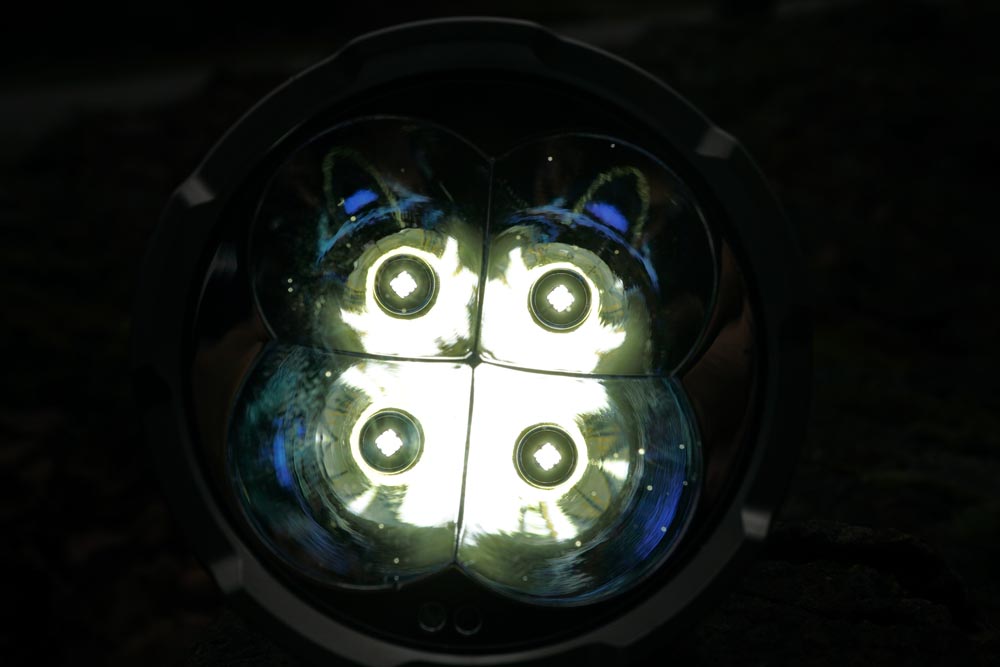
Here are some shots in the dark ...

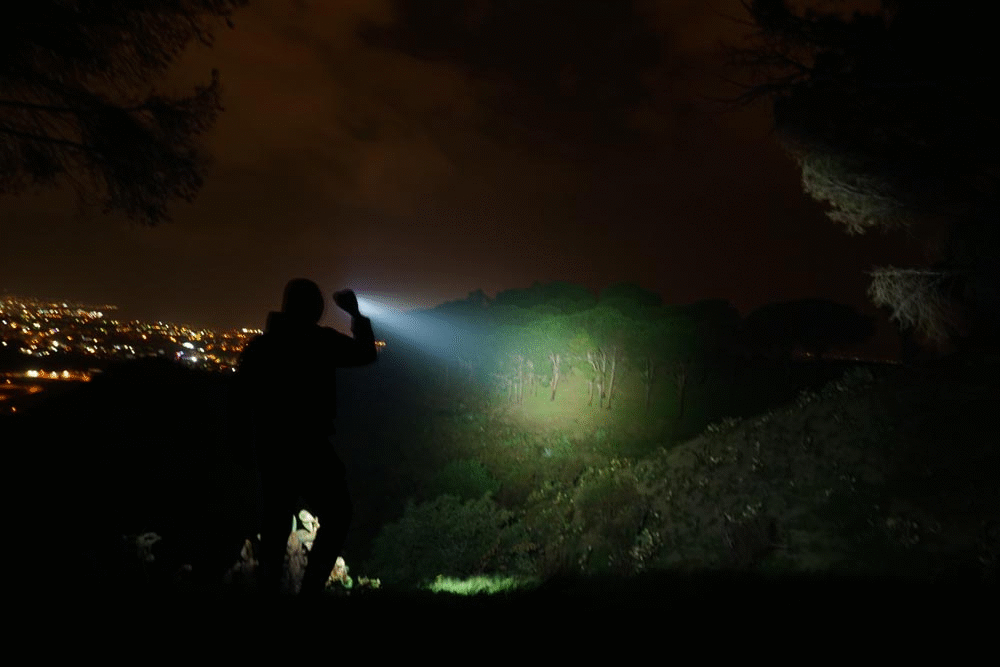

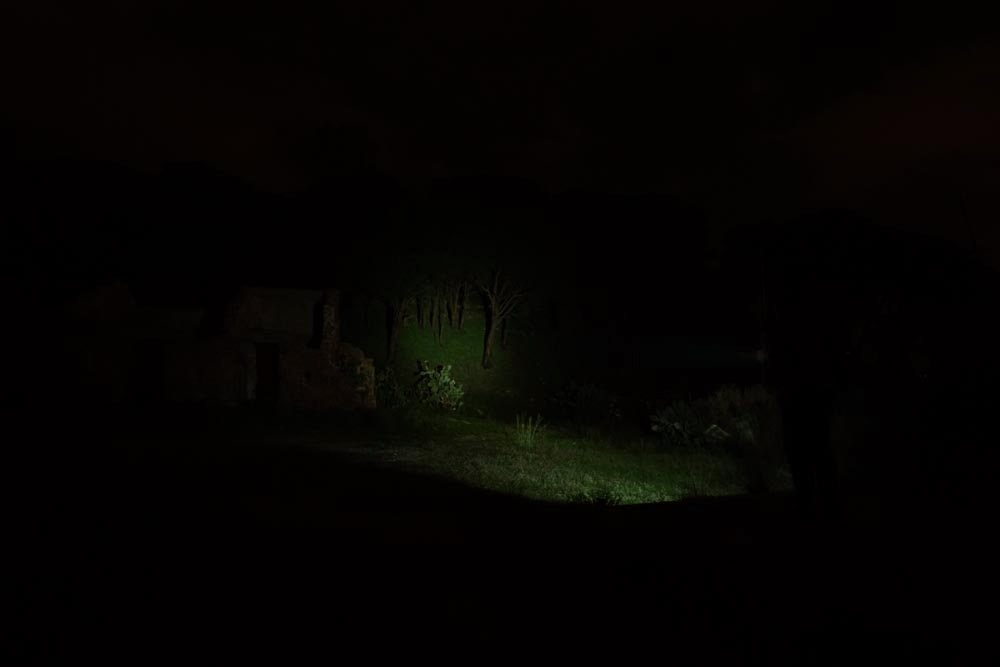
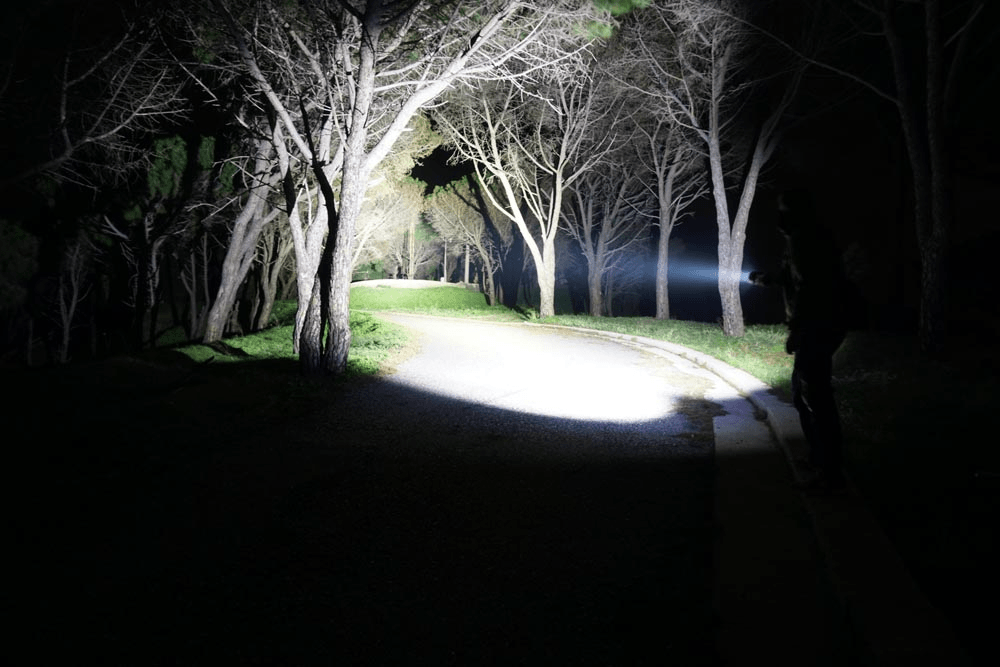
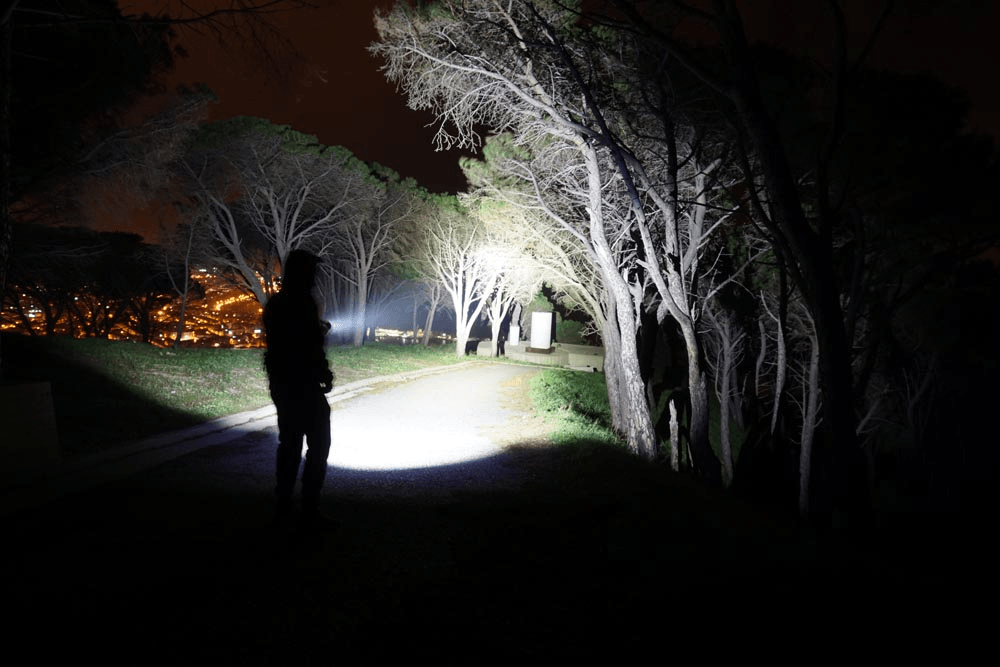
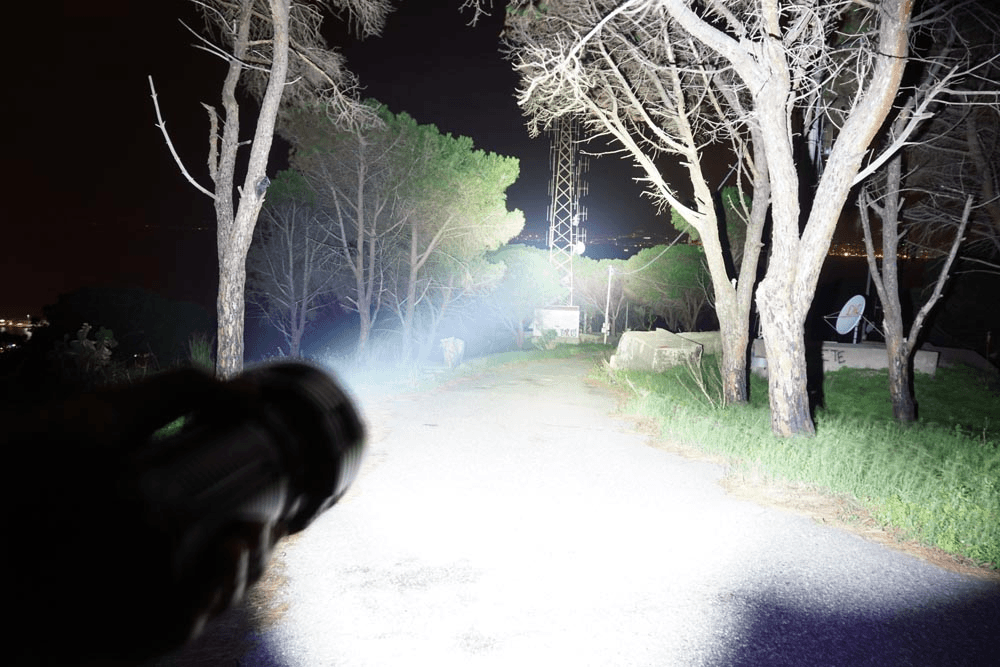
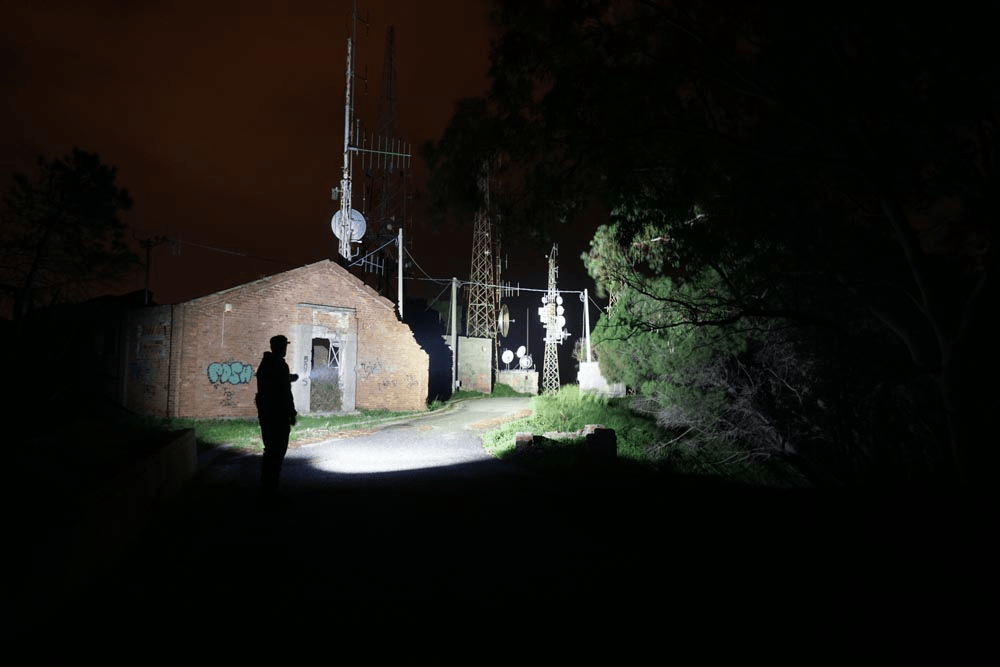


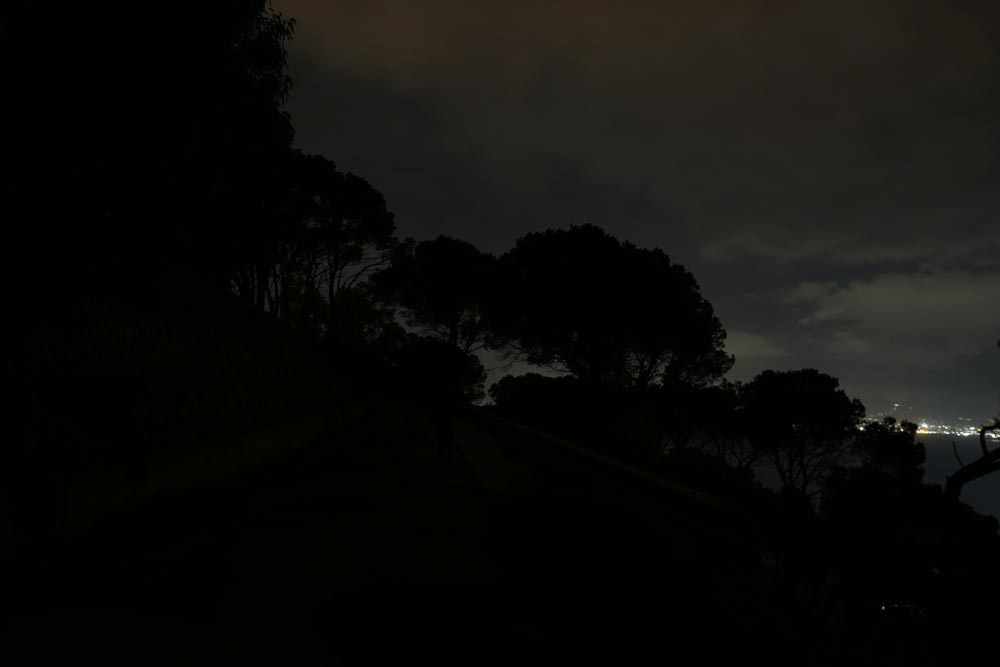
Conclusions
Pro:
• Excellent build quality, abundant thicknesses, perfect anodization, reactive switches, fluid and sliding threads
• Double switch and status LED
• Good Turbo power
• Excellent regulation
• Thermal protection always active
• Excellent heat dissipation
• Fast charging via Type-C
• Powerbank function with fast charging function
• Simple user interface
• Proximity sensors
• Packed full of accessories
• Possibility to use 21700 cells instead of the battery pack *
Cons:
• * When using non-proprietary cells the flashlight behaves differently: the 12000 lumen Turbo cannot be used and the Memory Mode does not work
• The user interface, albeit simple and complete, doesn't drive me crazy: I don't really like the long press to turn it on and off and I don't find it useful that the Turbo has been inserted into the cycle of levels of the general mode. For example, I would have preferred a hidden Turbo that can be recalled directly with a double click ... but these are just personal tastes
To conclude and as seen in this test, I can only say that the Fenix LR50R is an exceptional product and certainly to be recommended !!!
Thank you for reading...XD